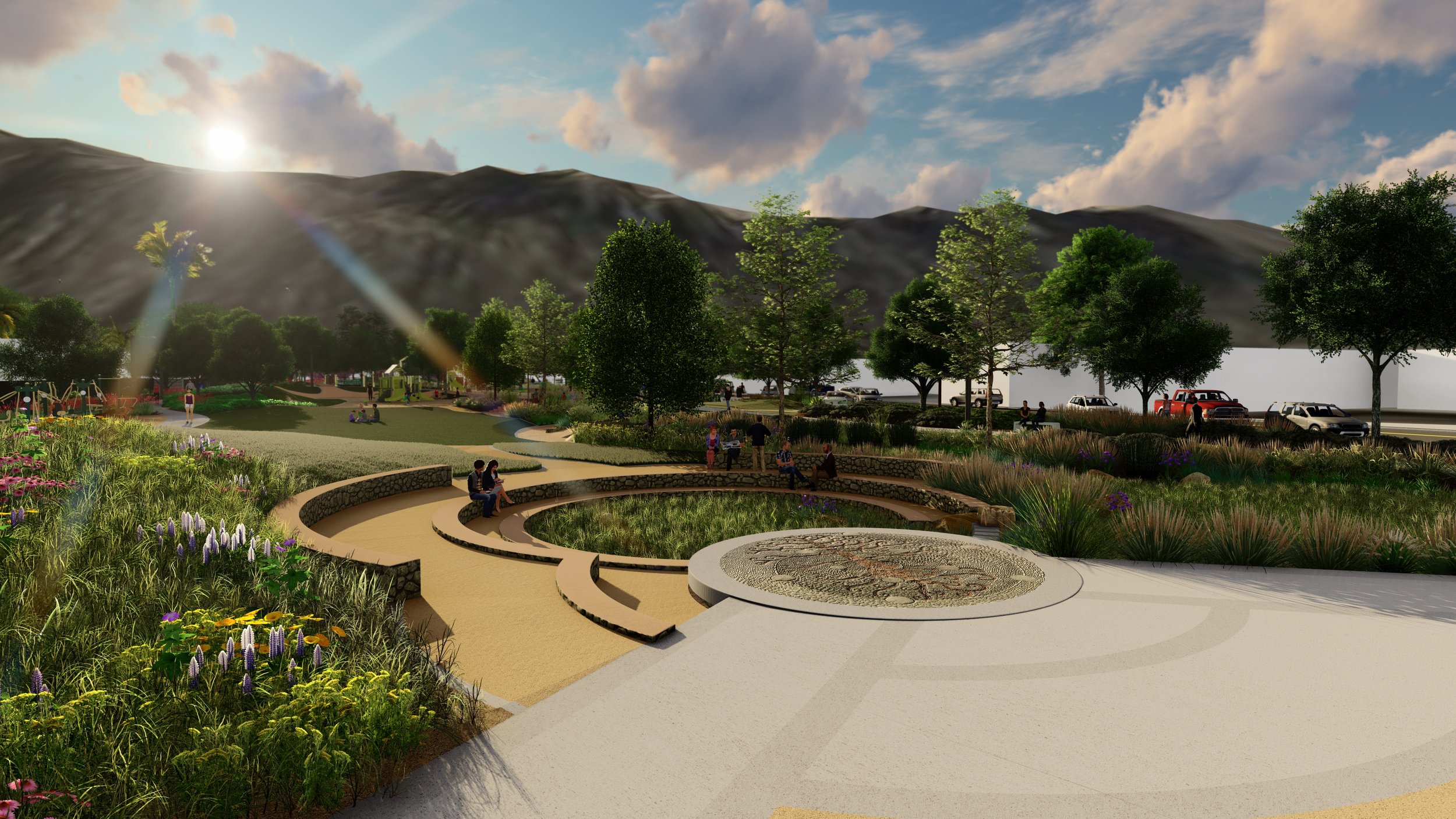
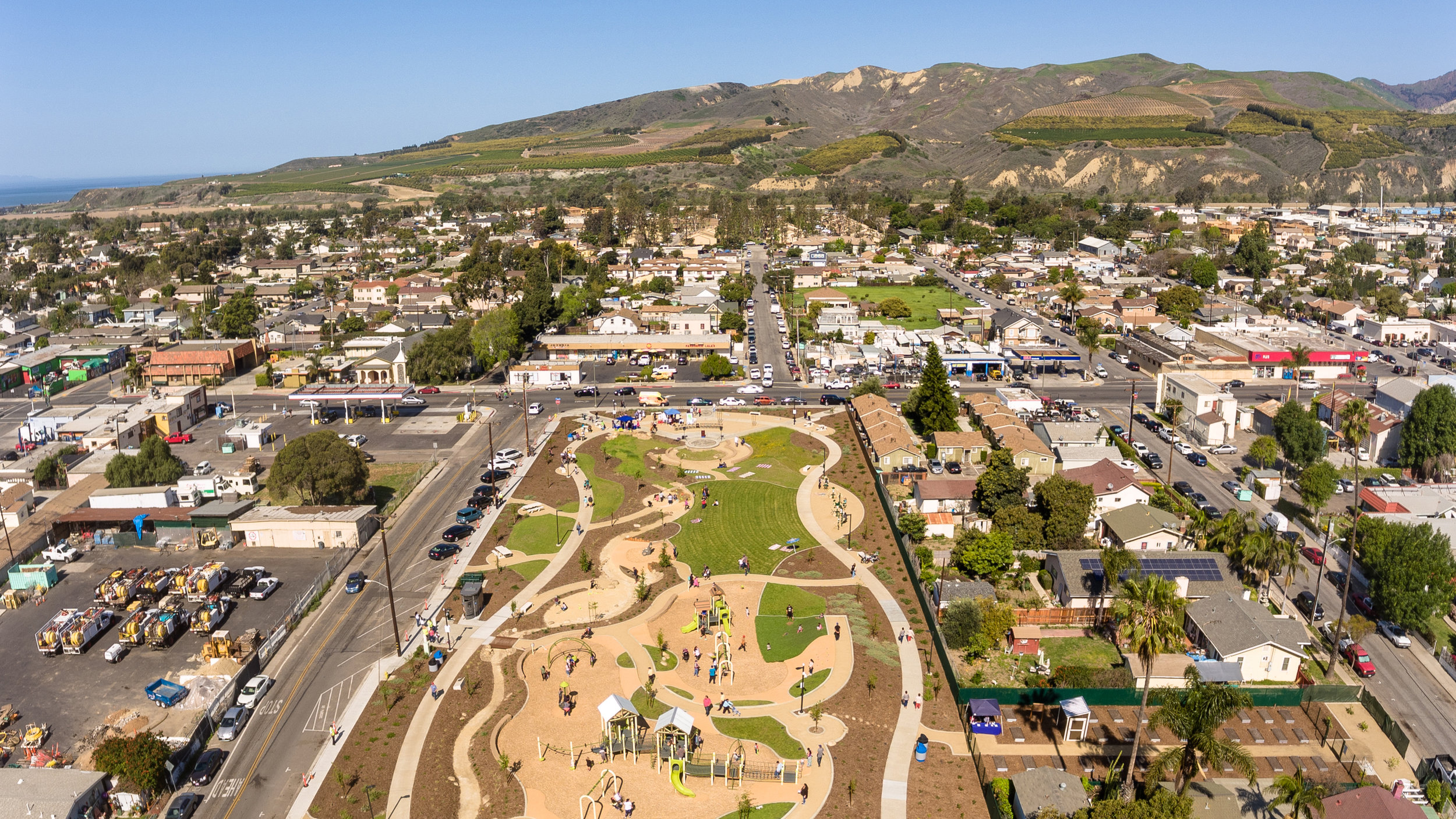
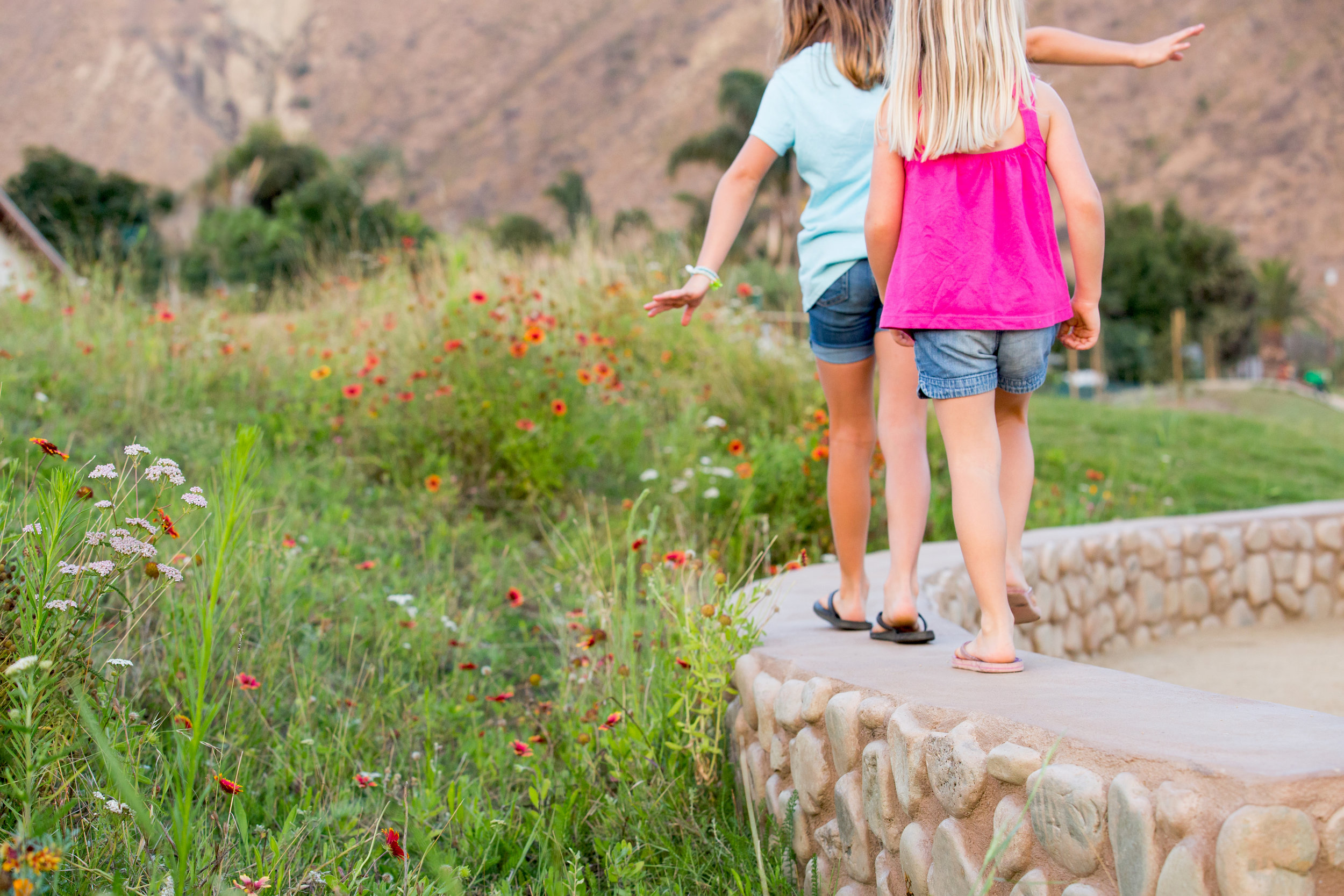
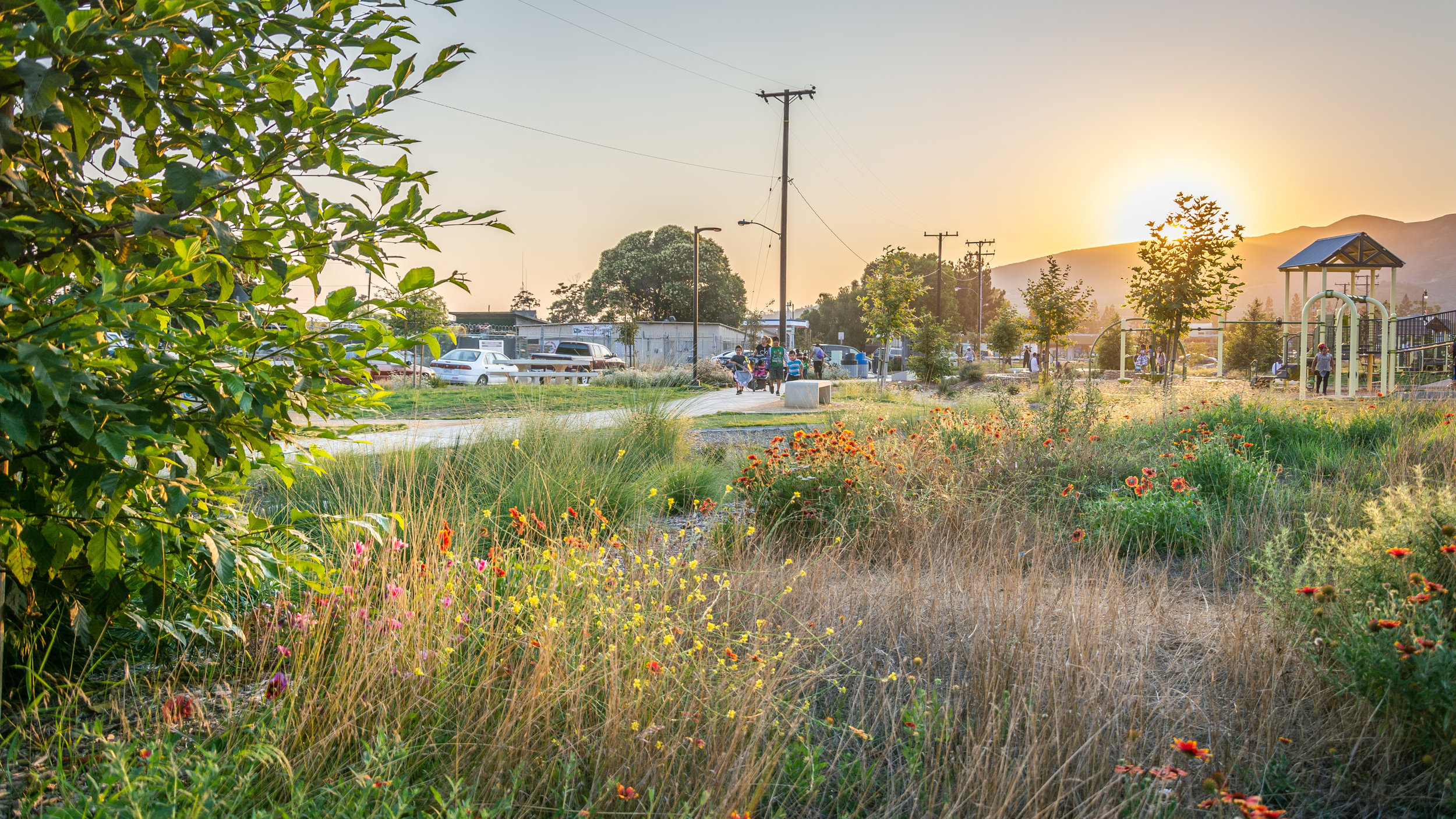
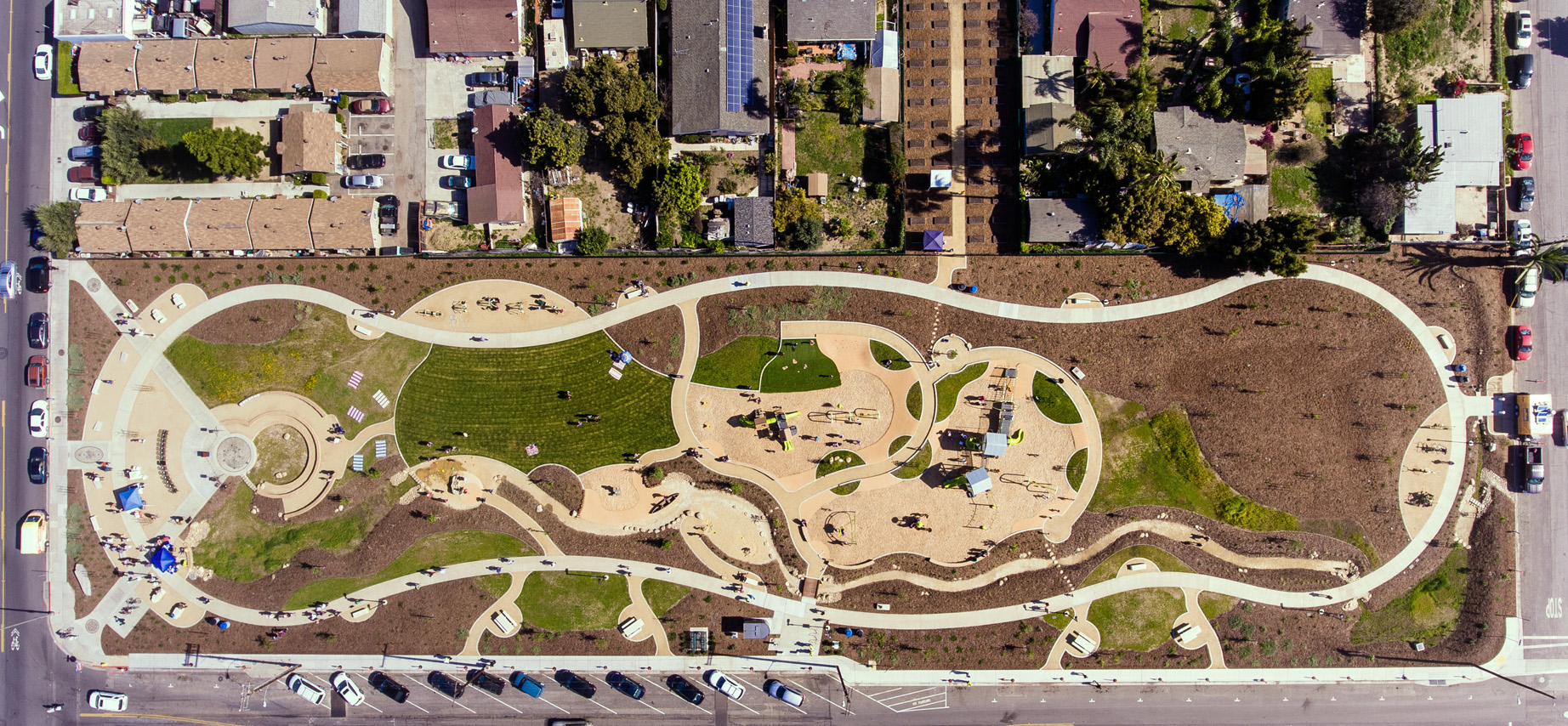
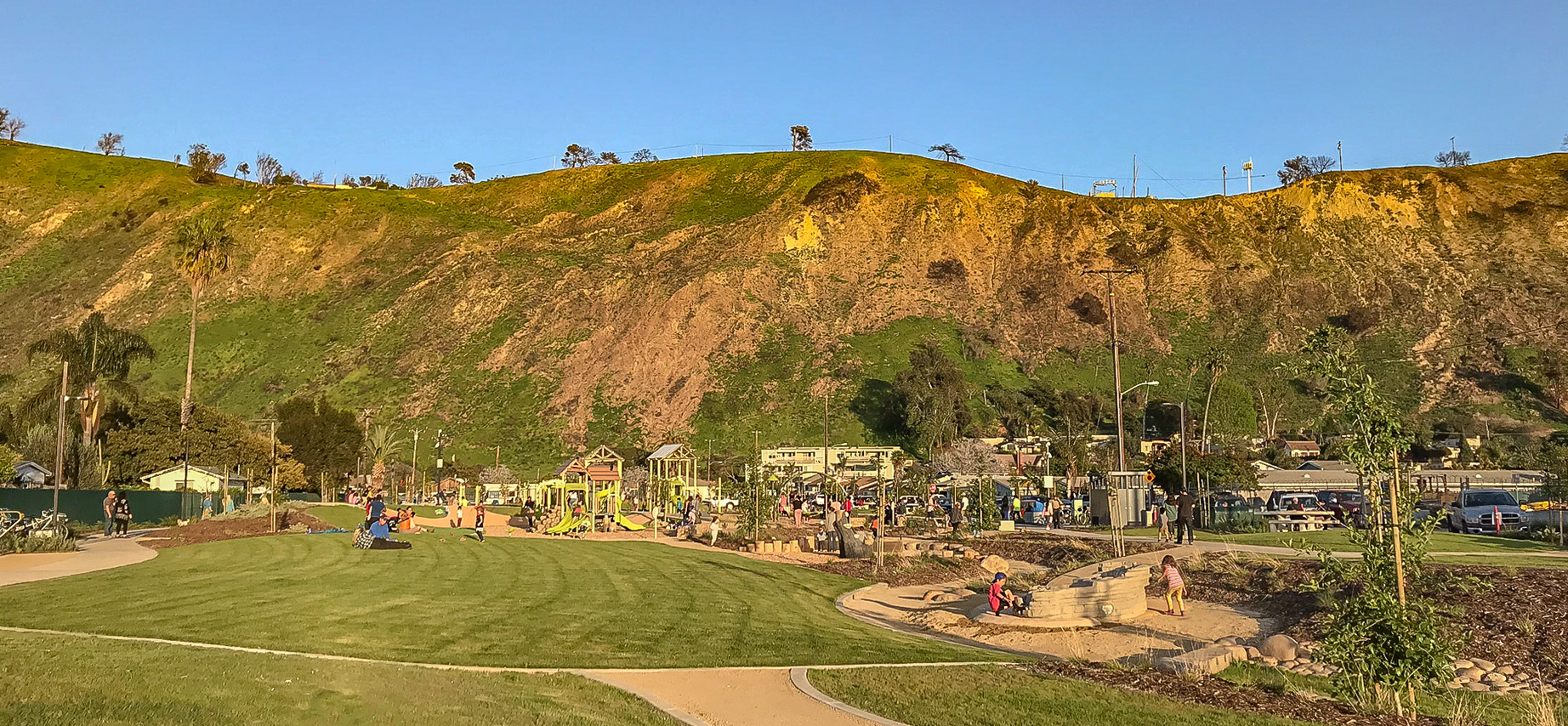
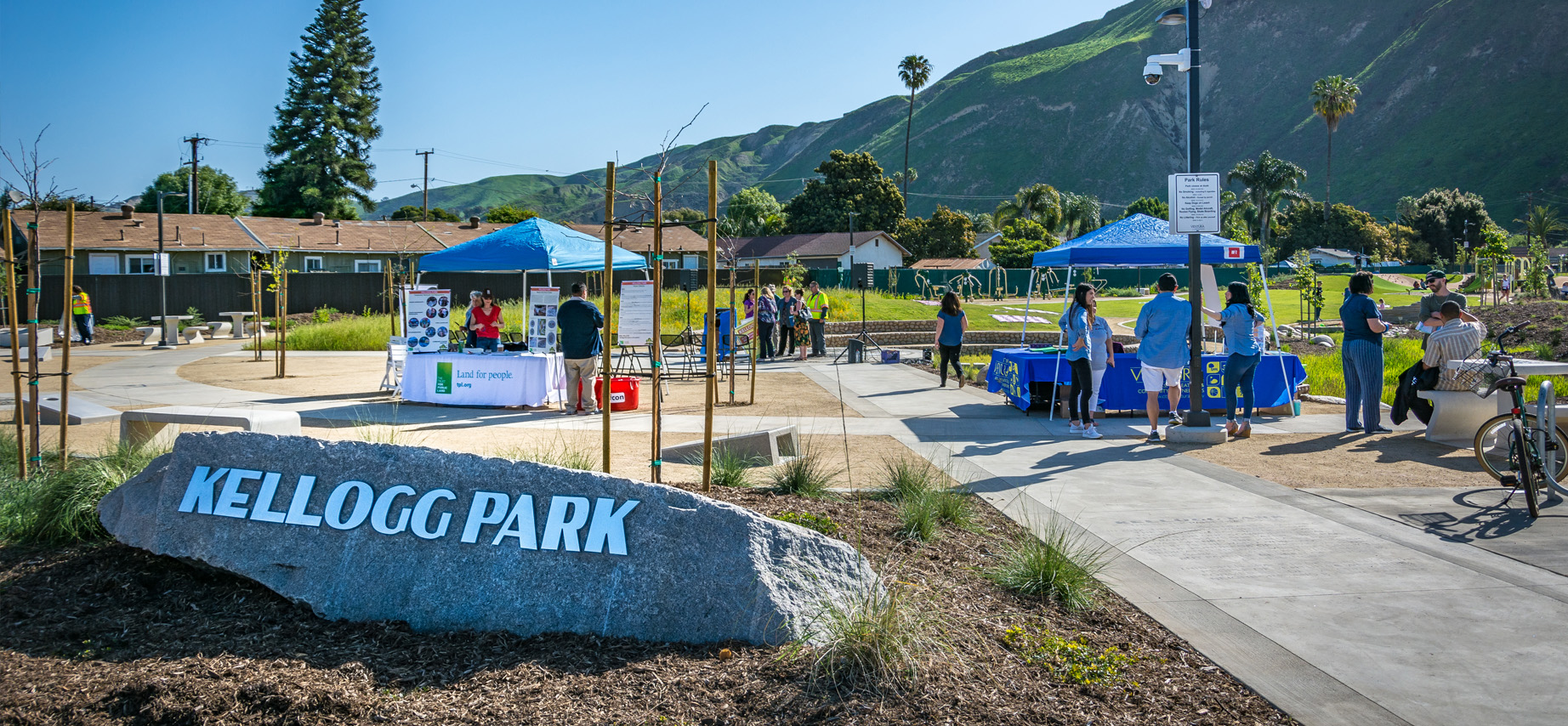
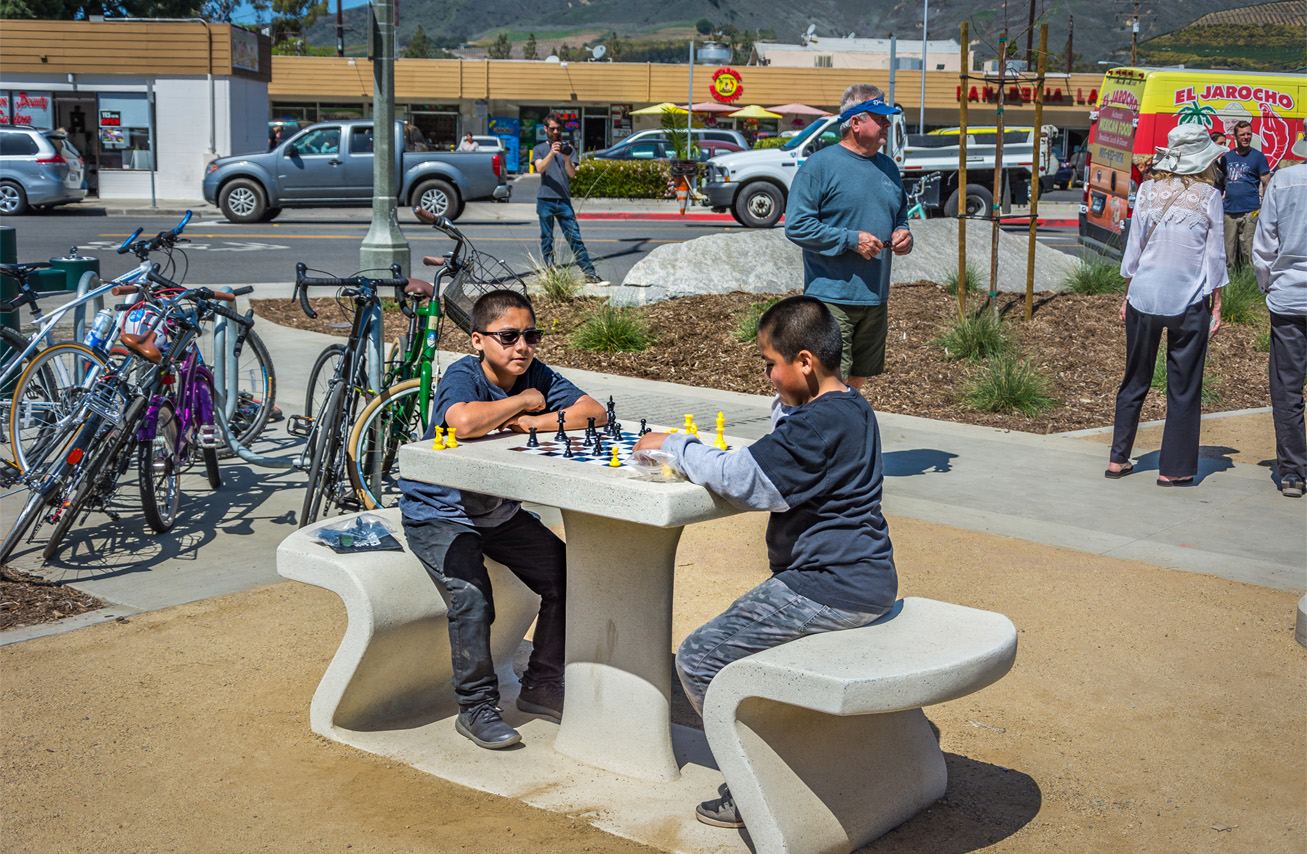
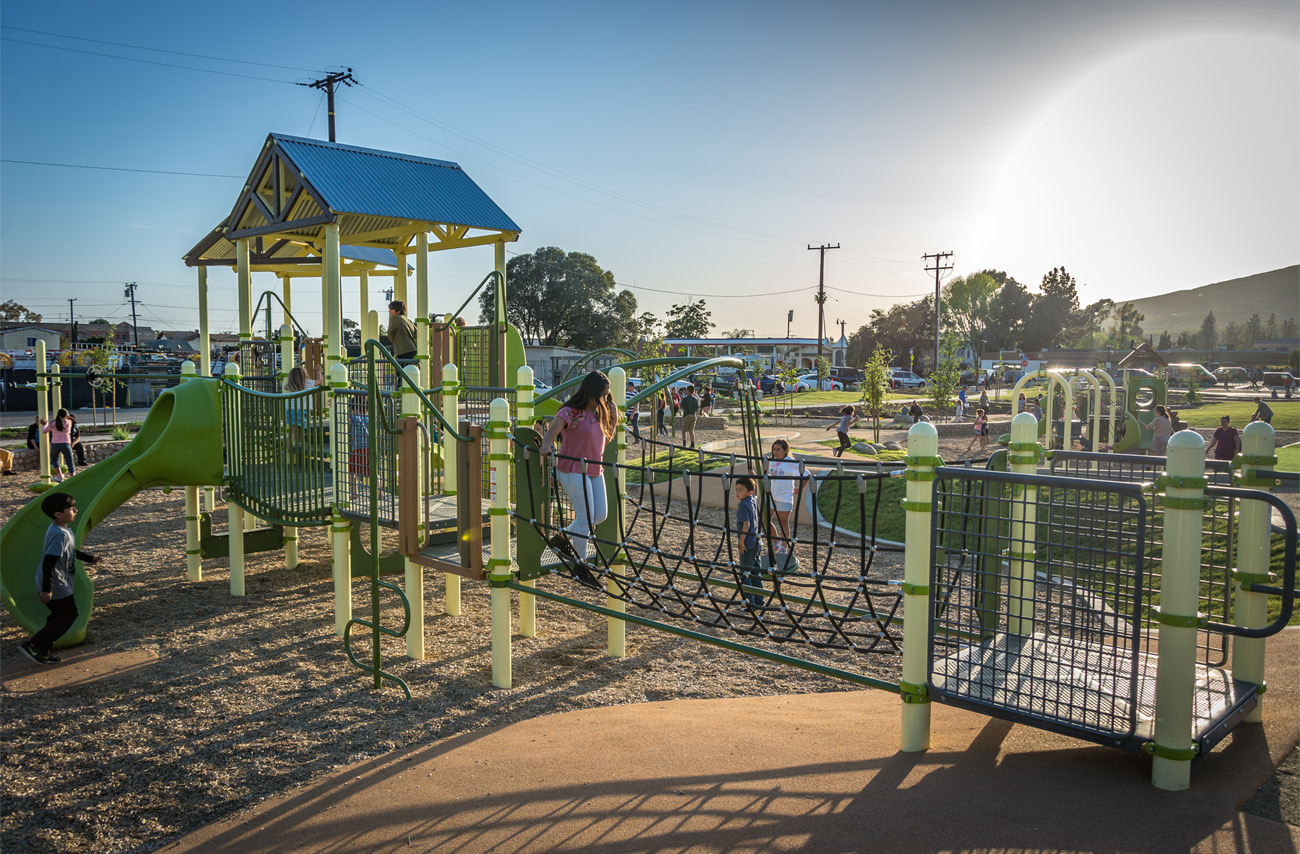
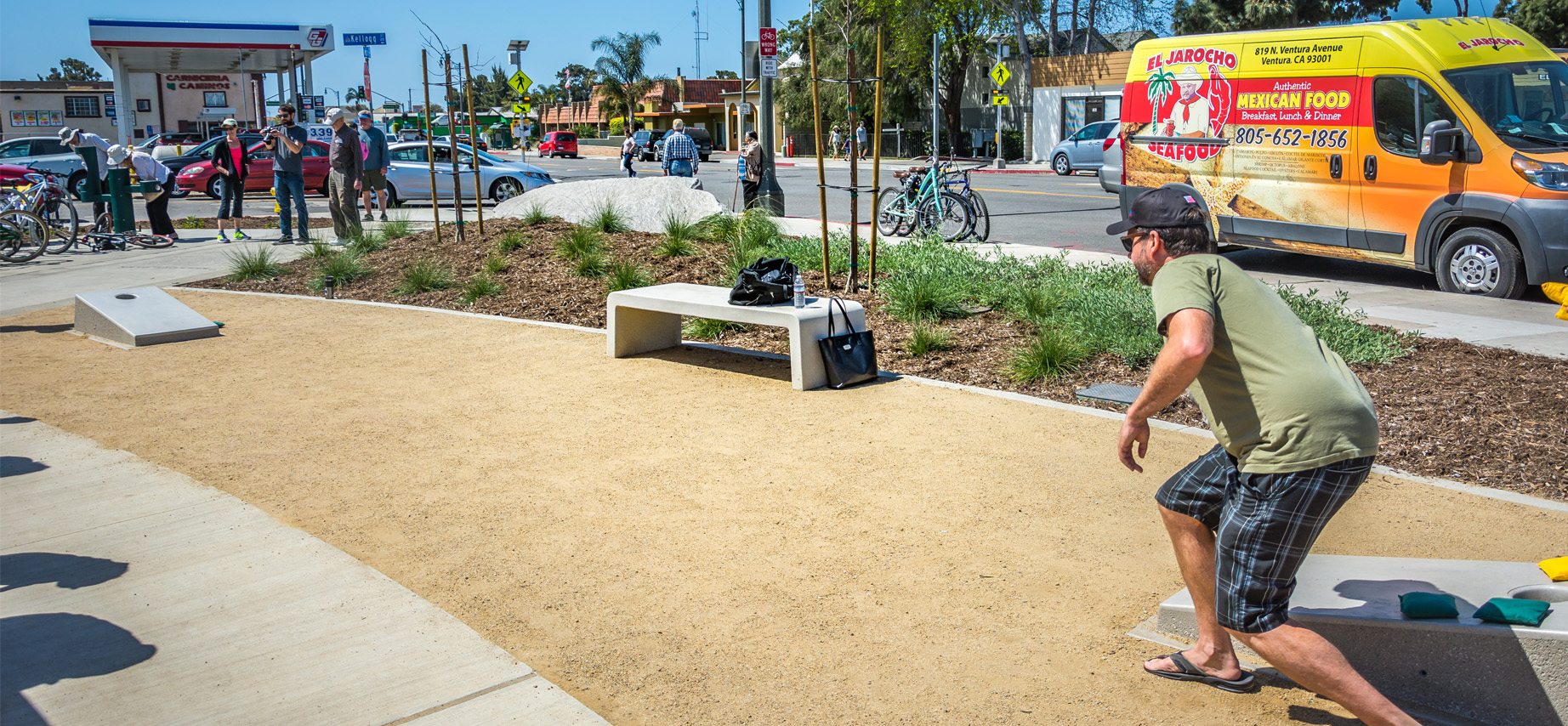
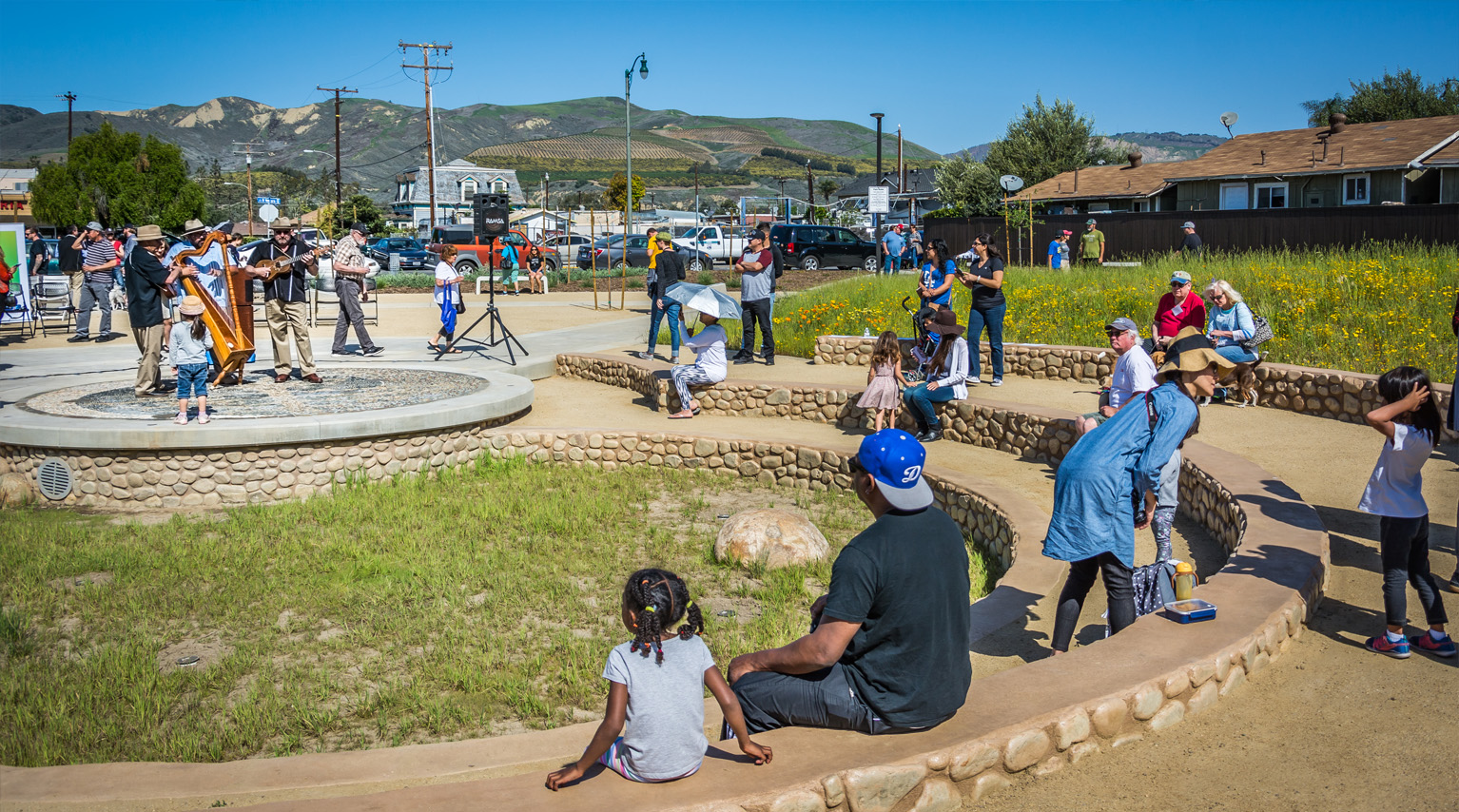
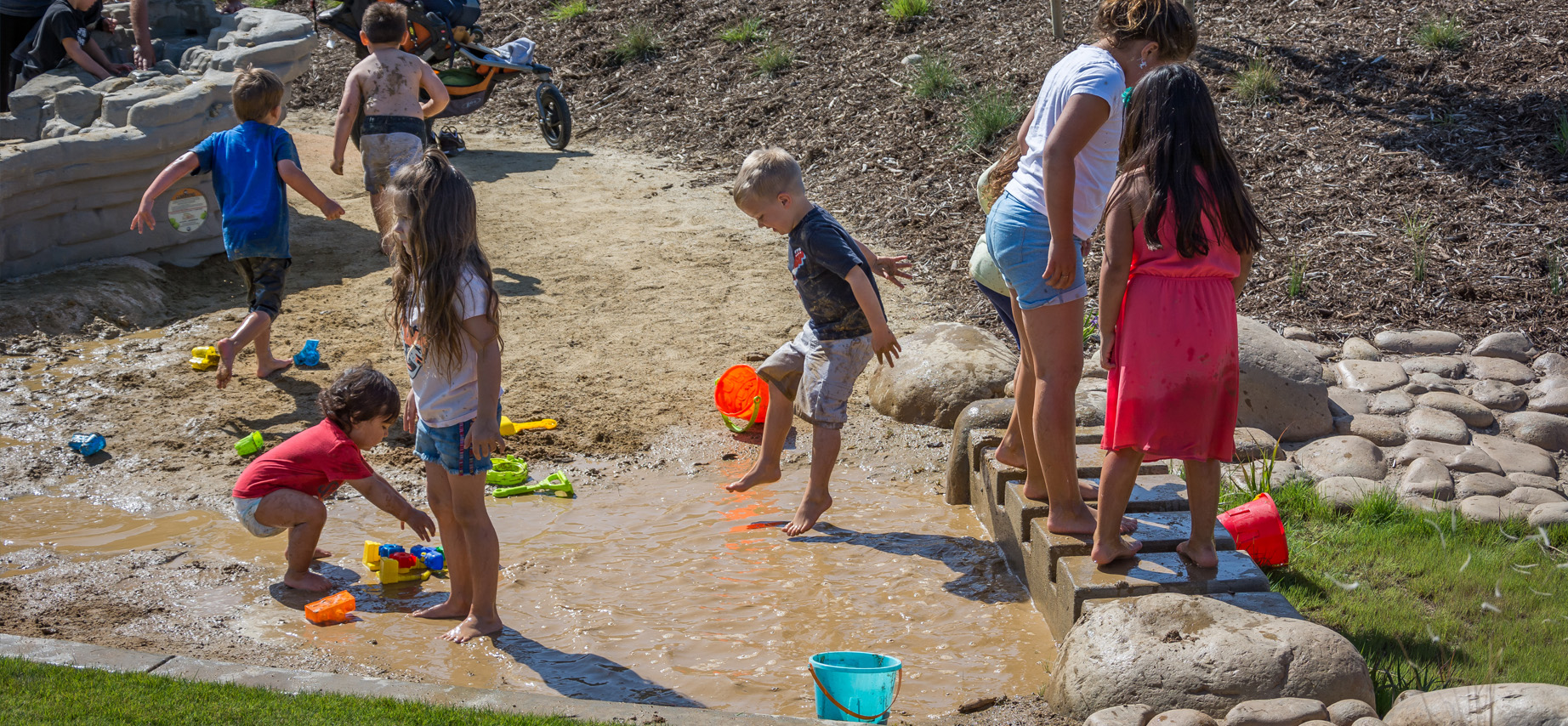
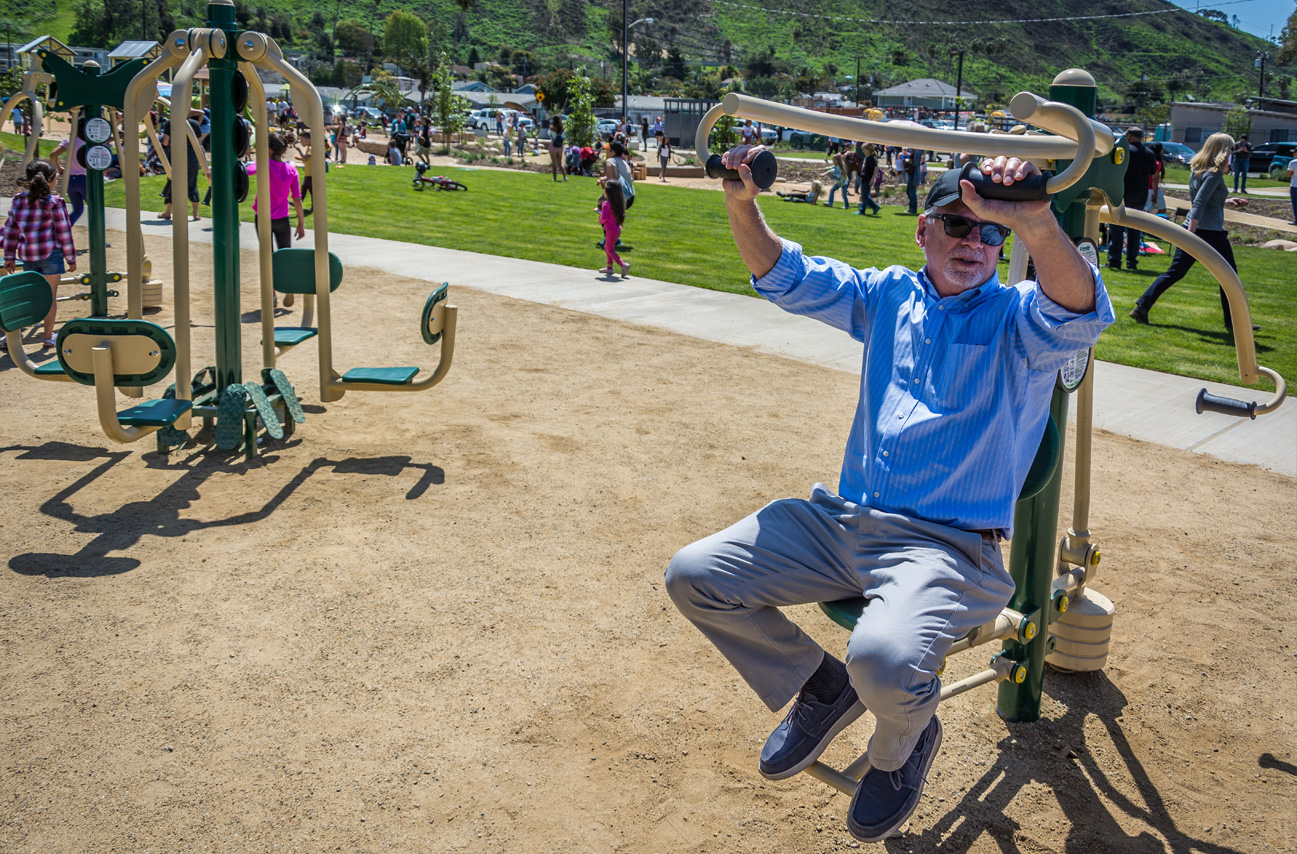
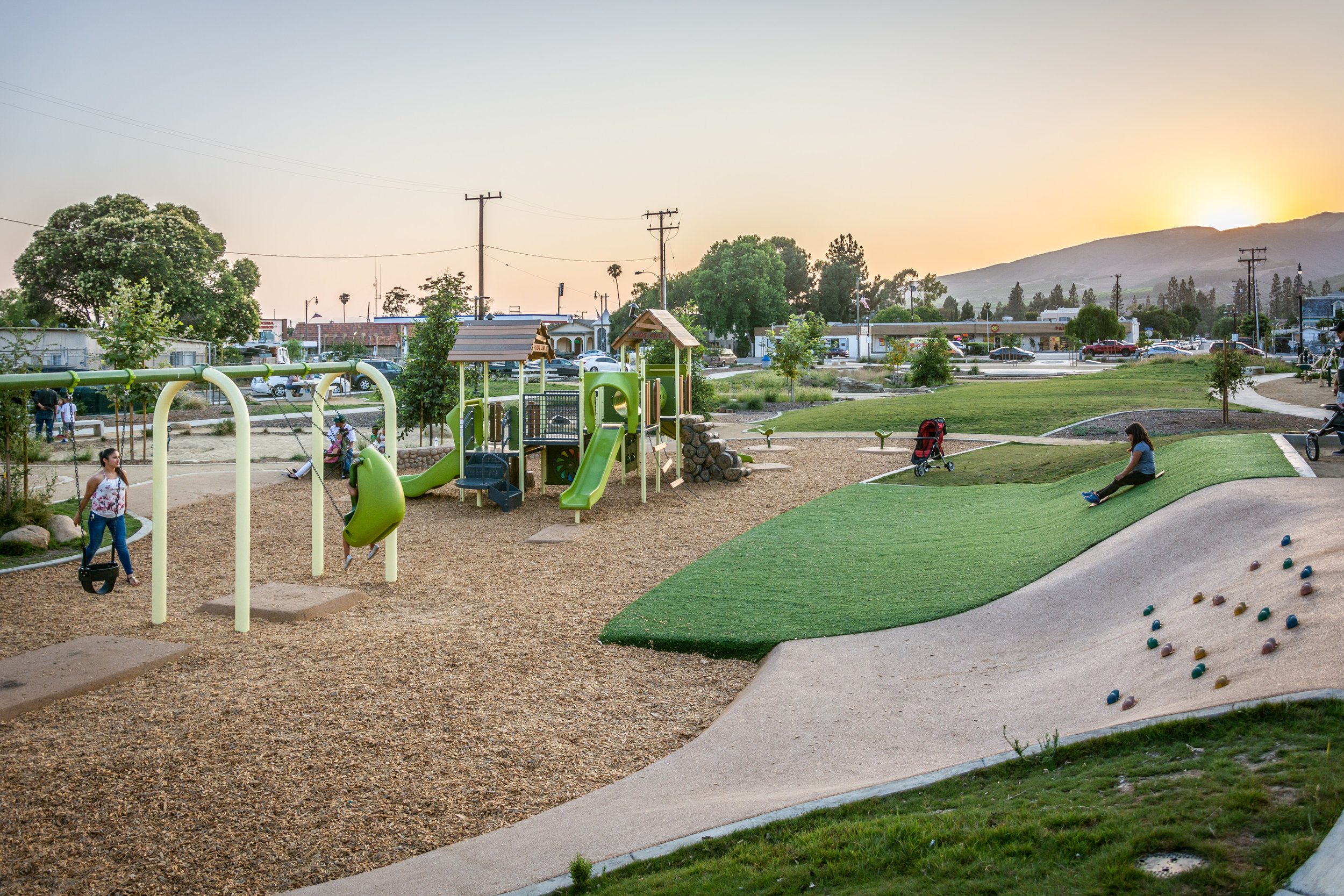
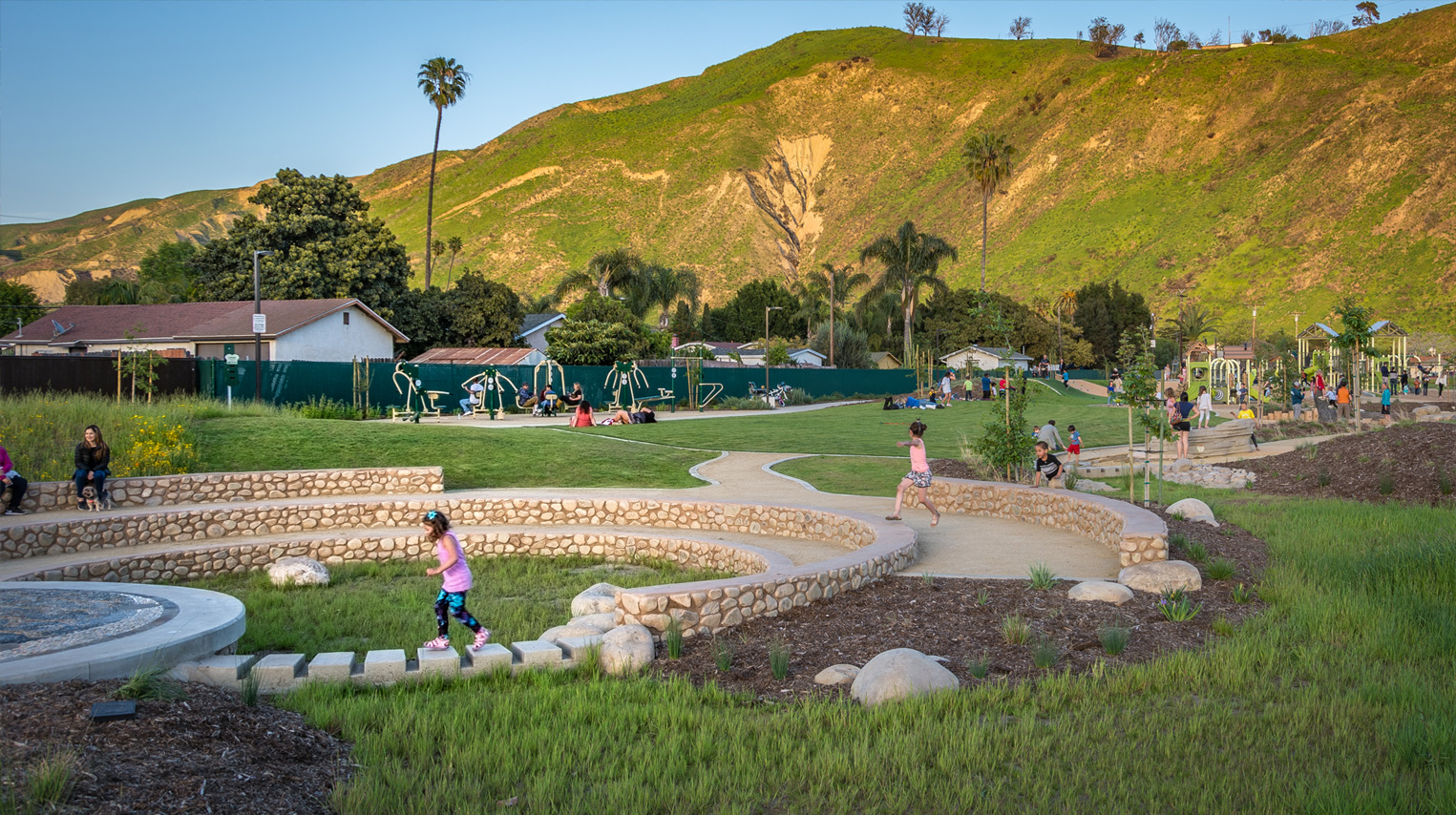
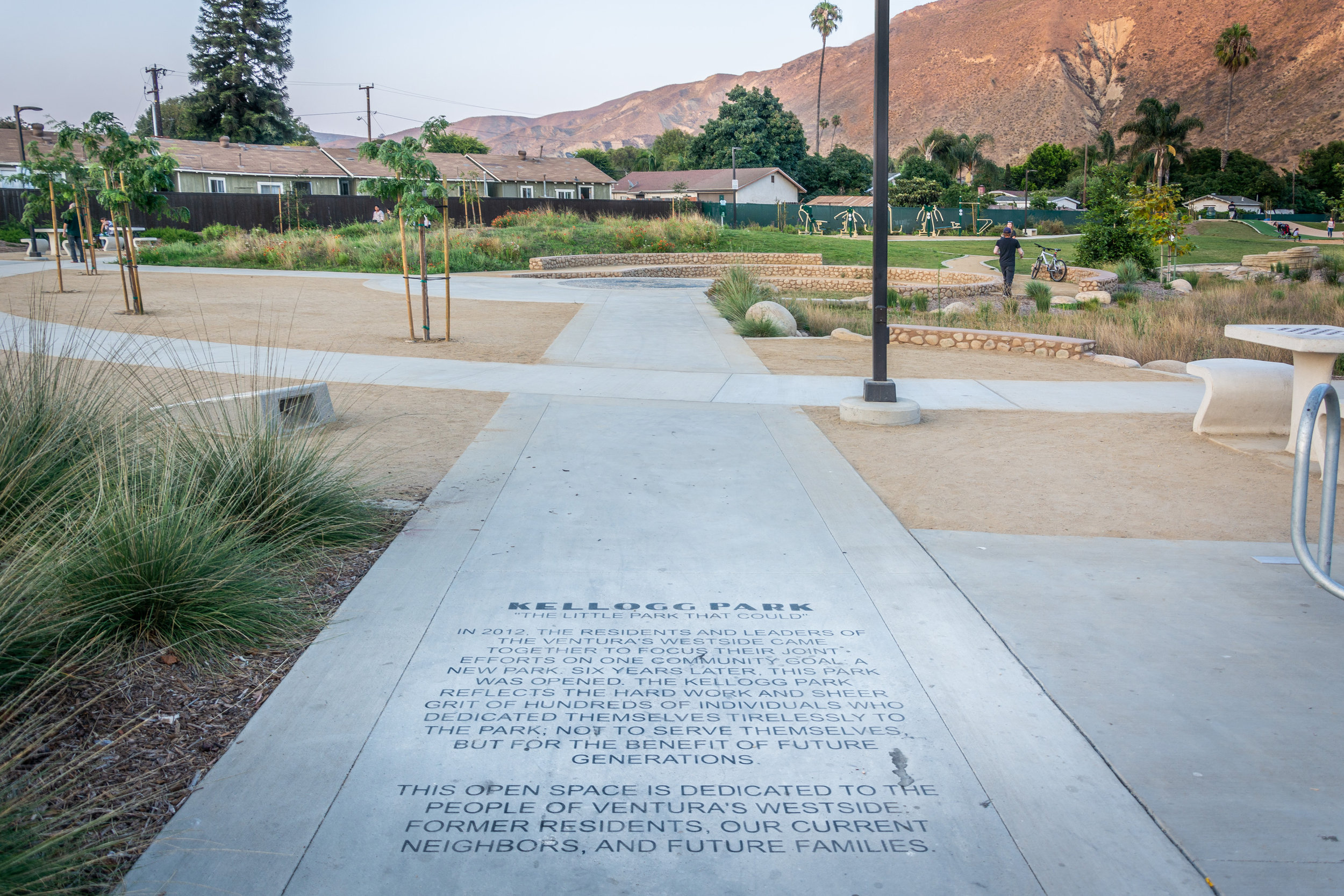
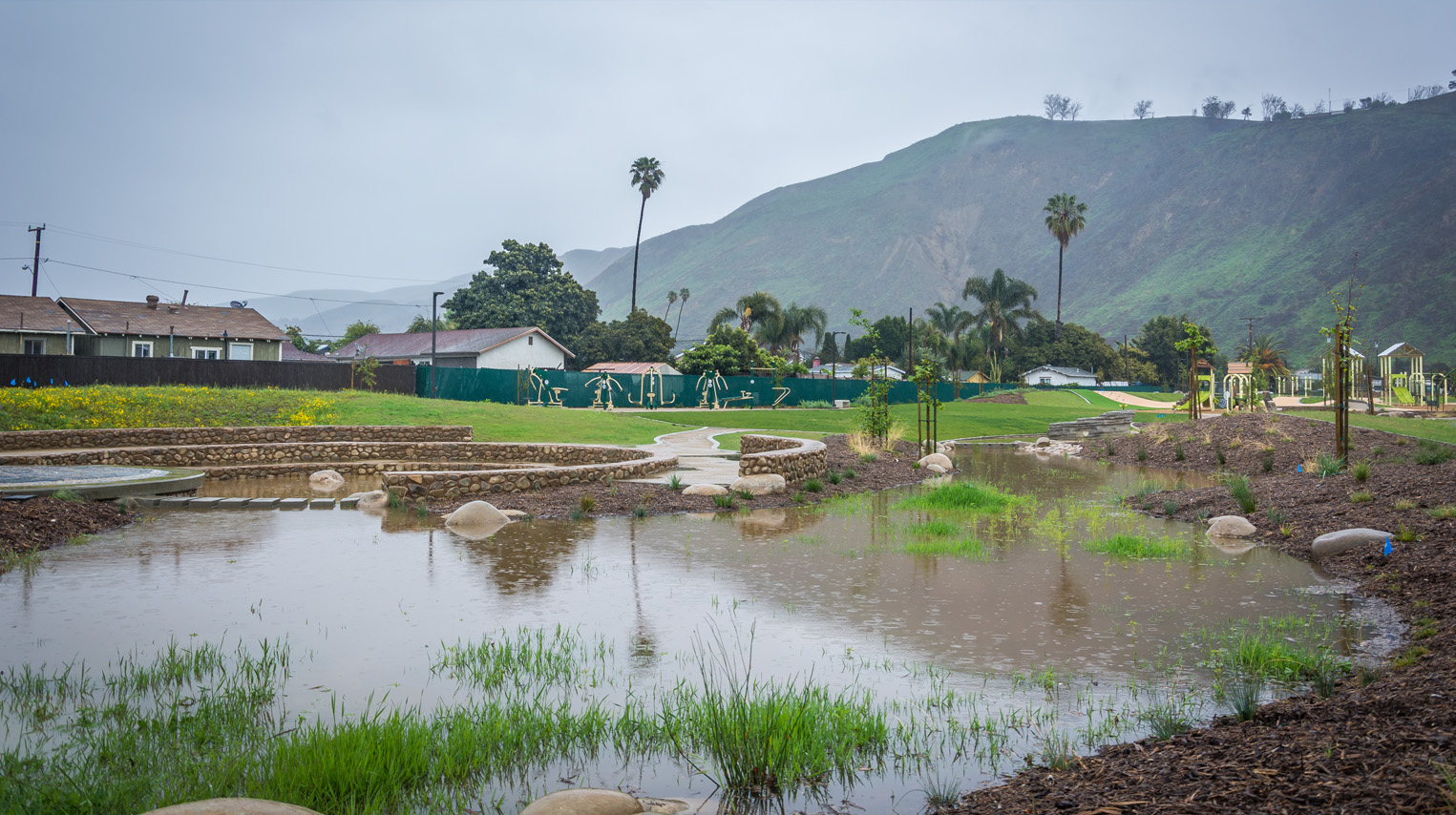
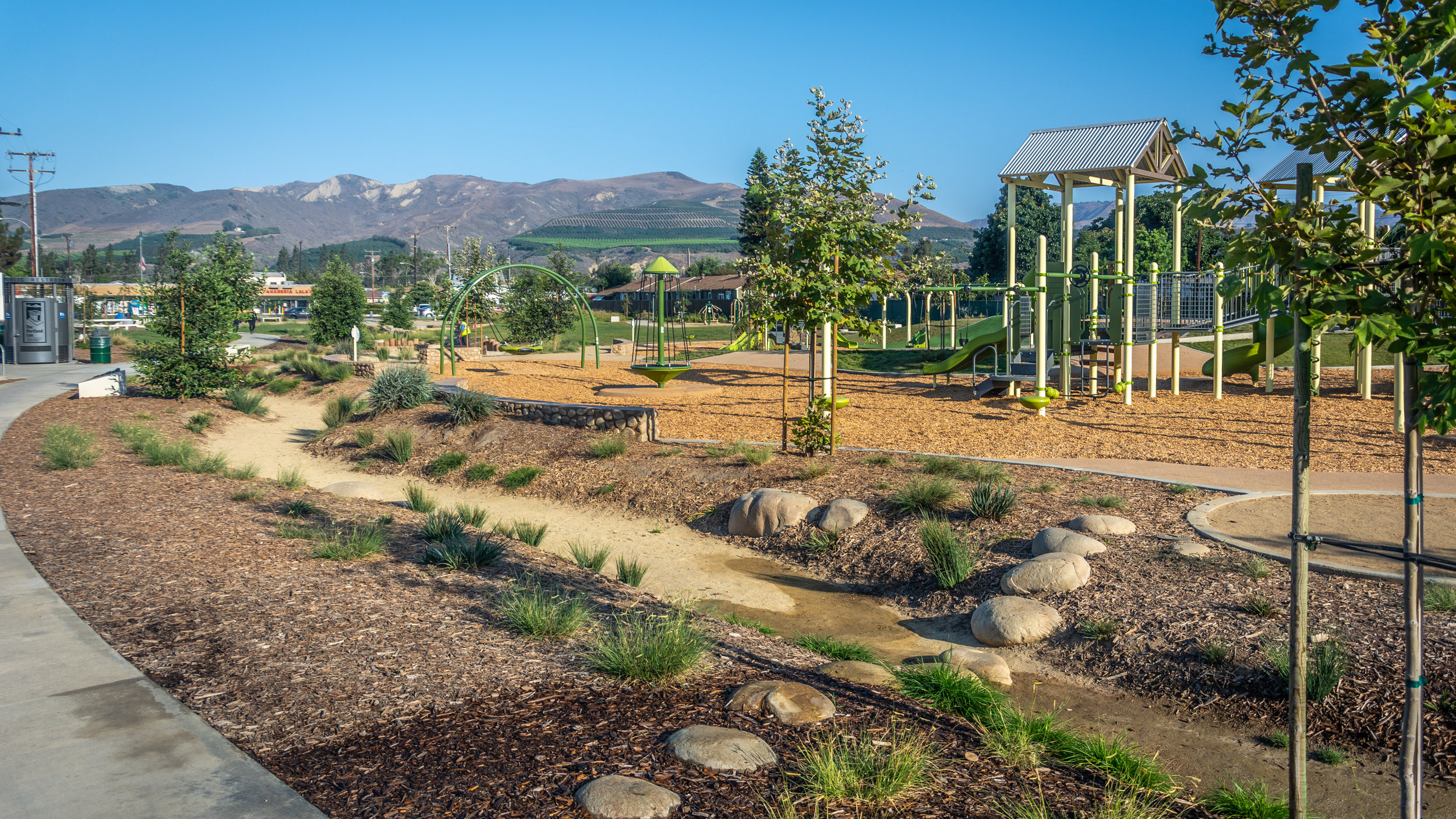
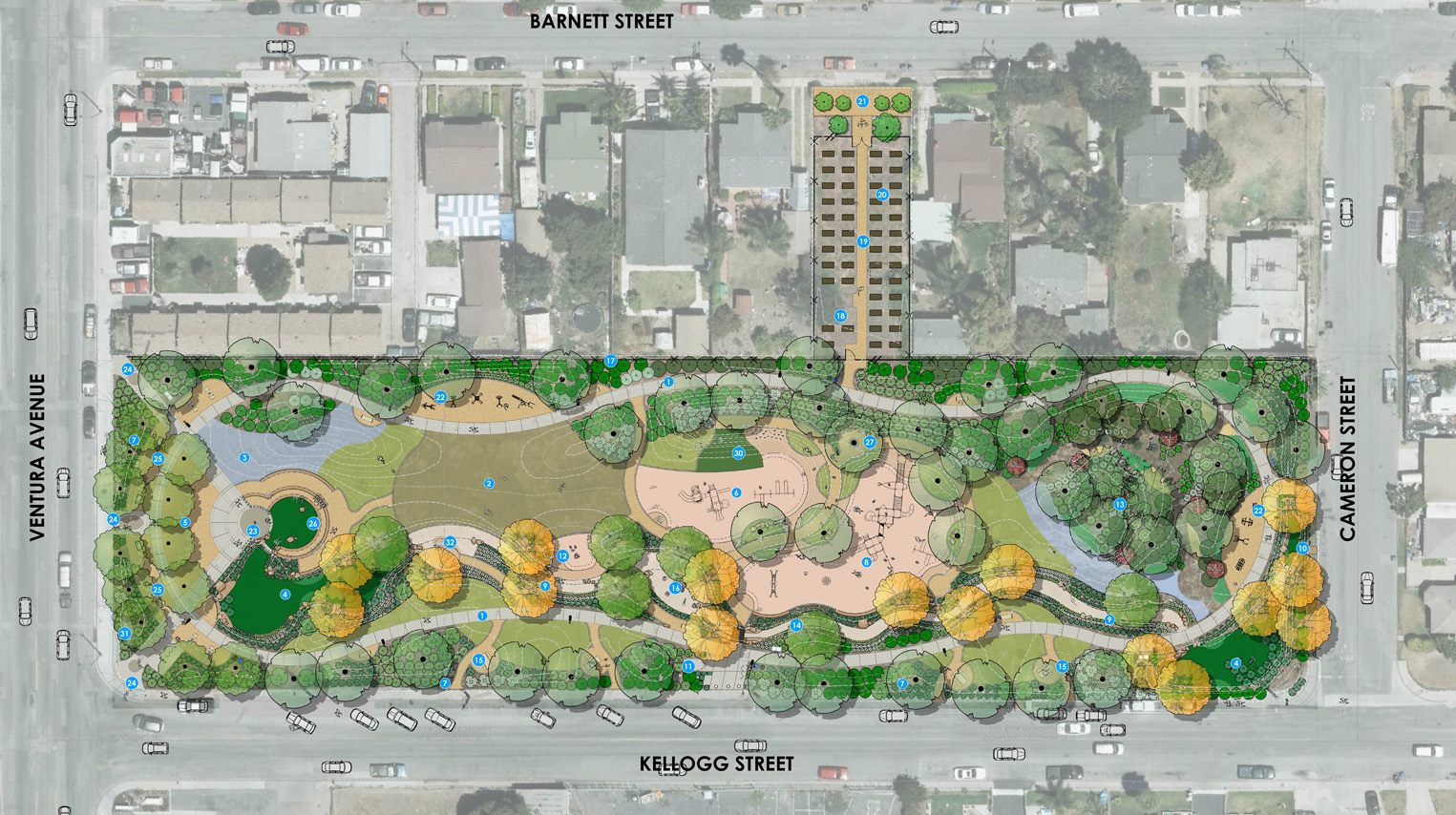
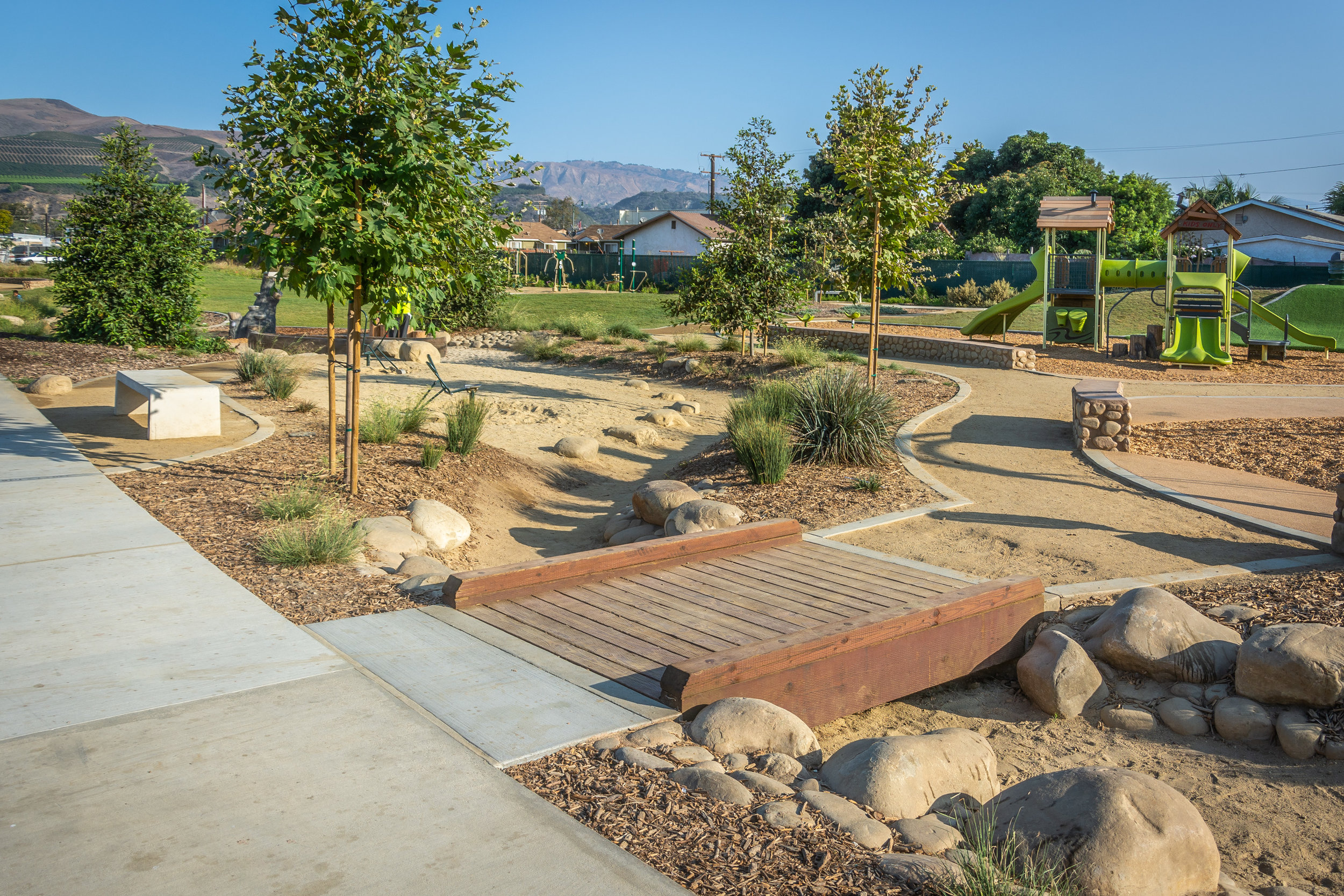
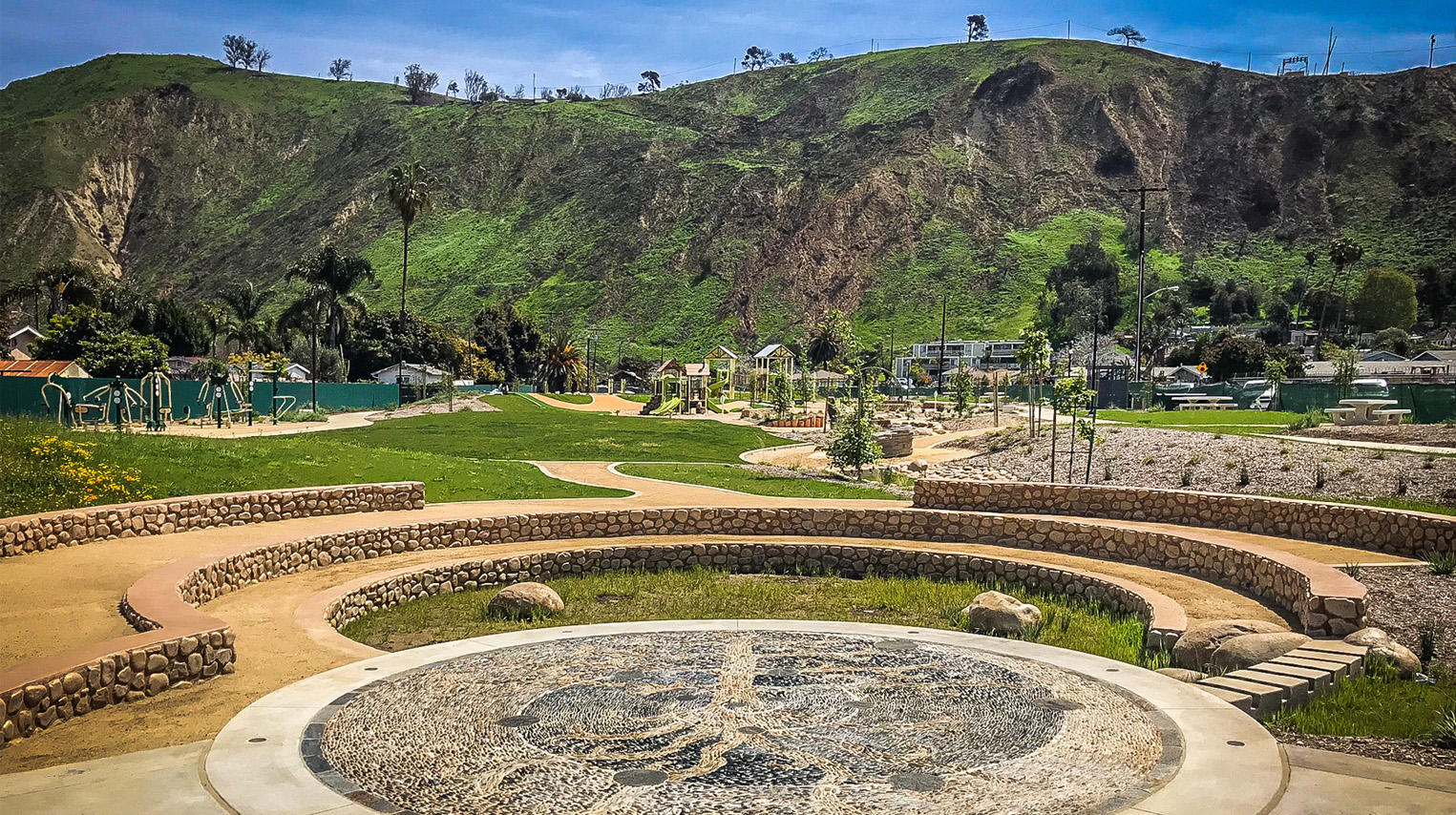
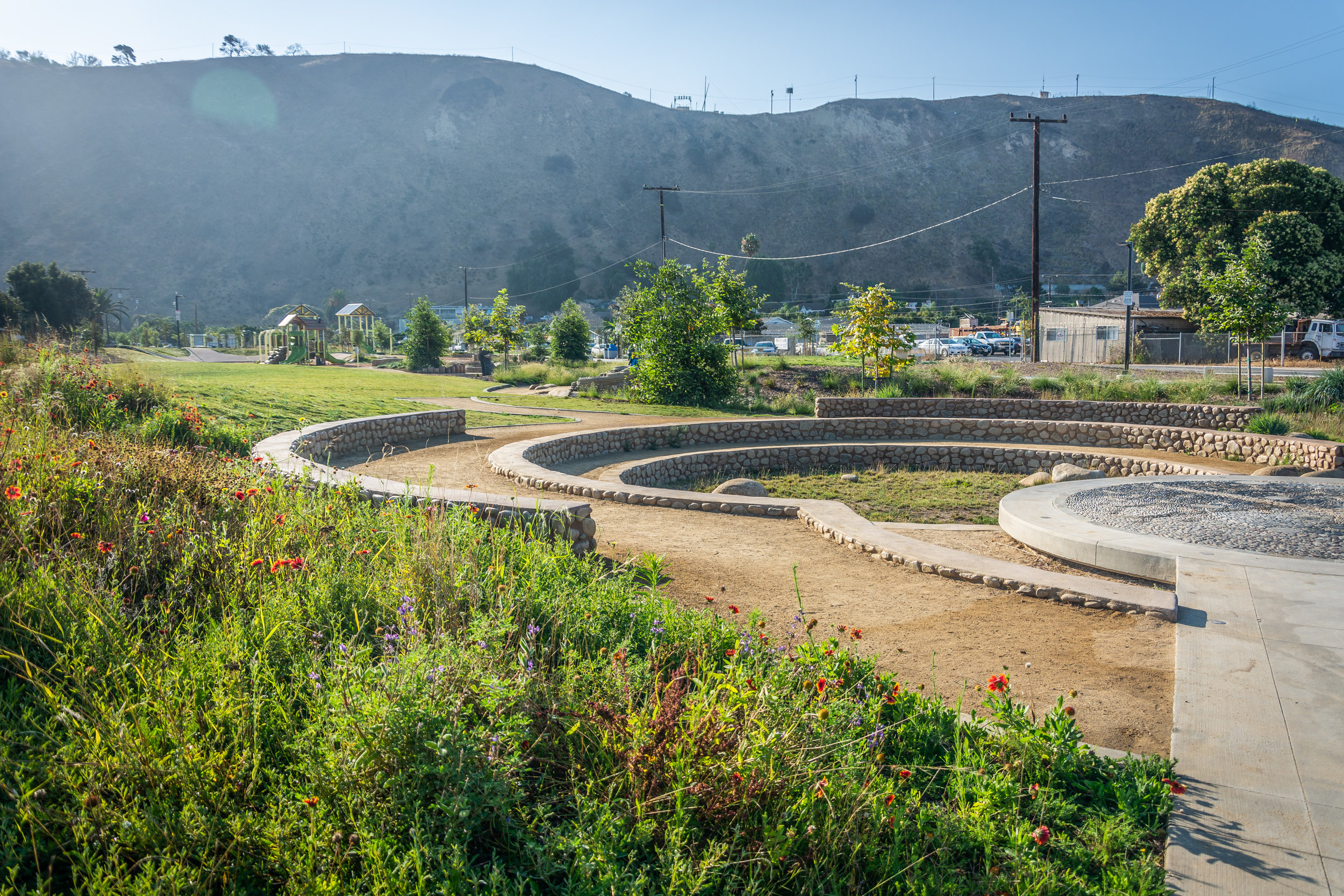
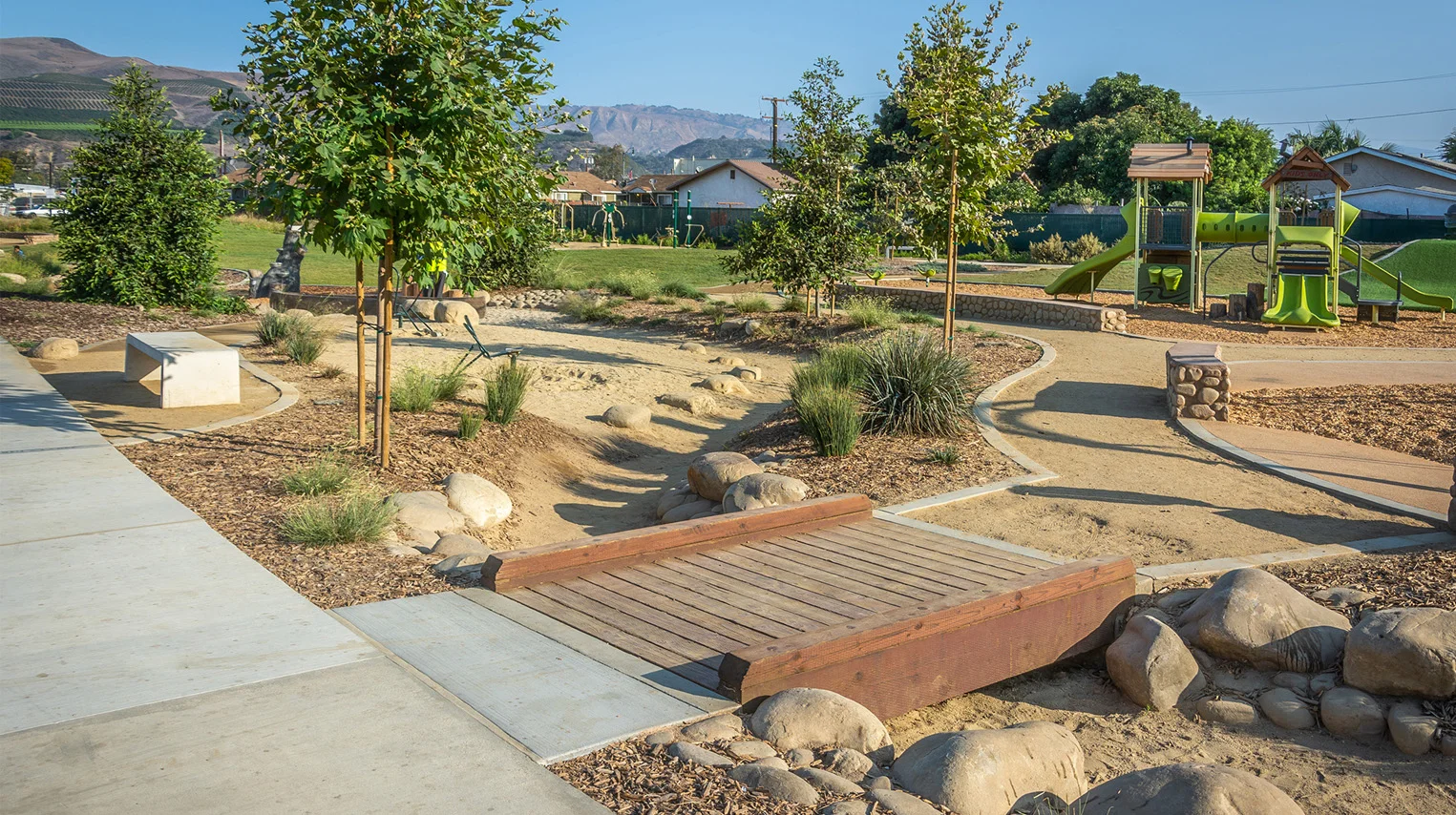
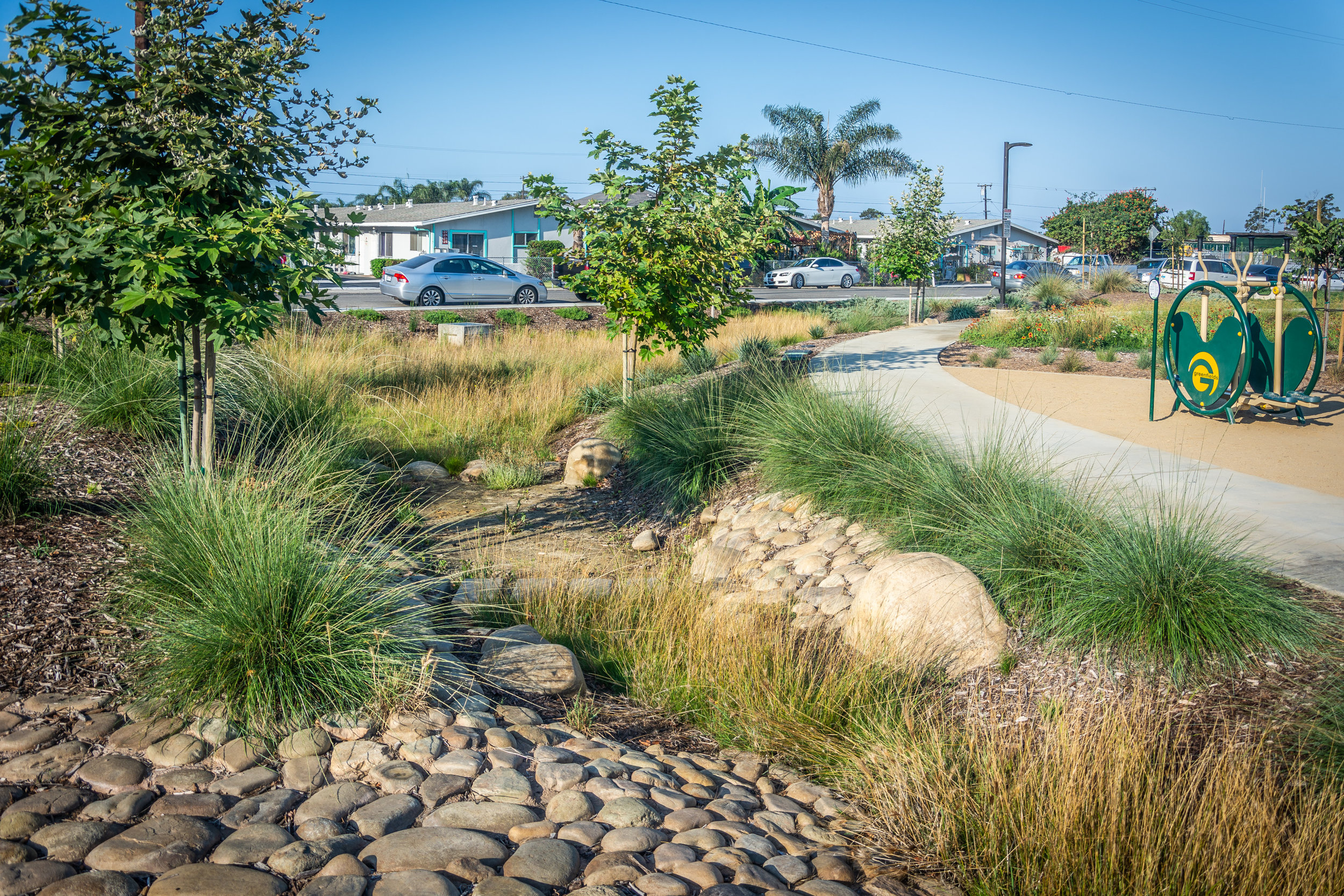
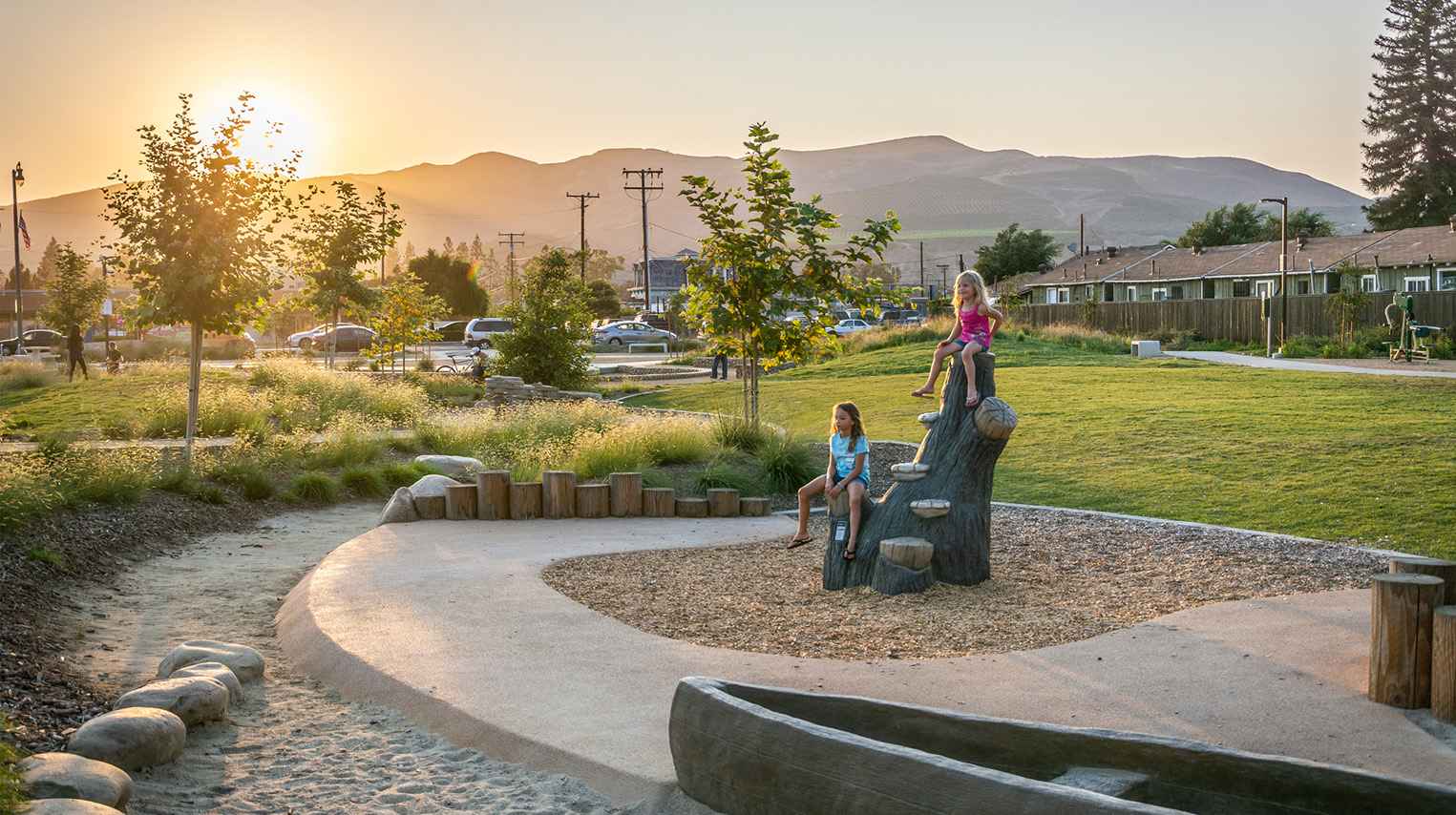
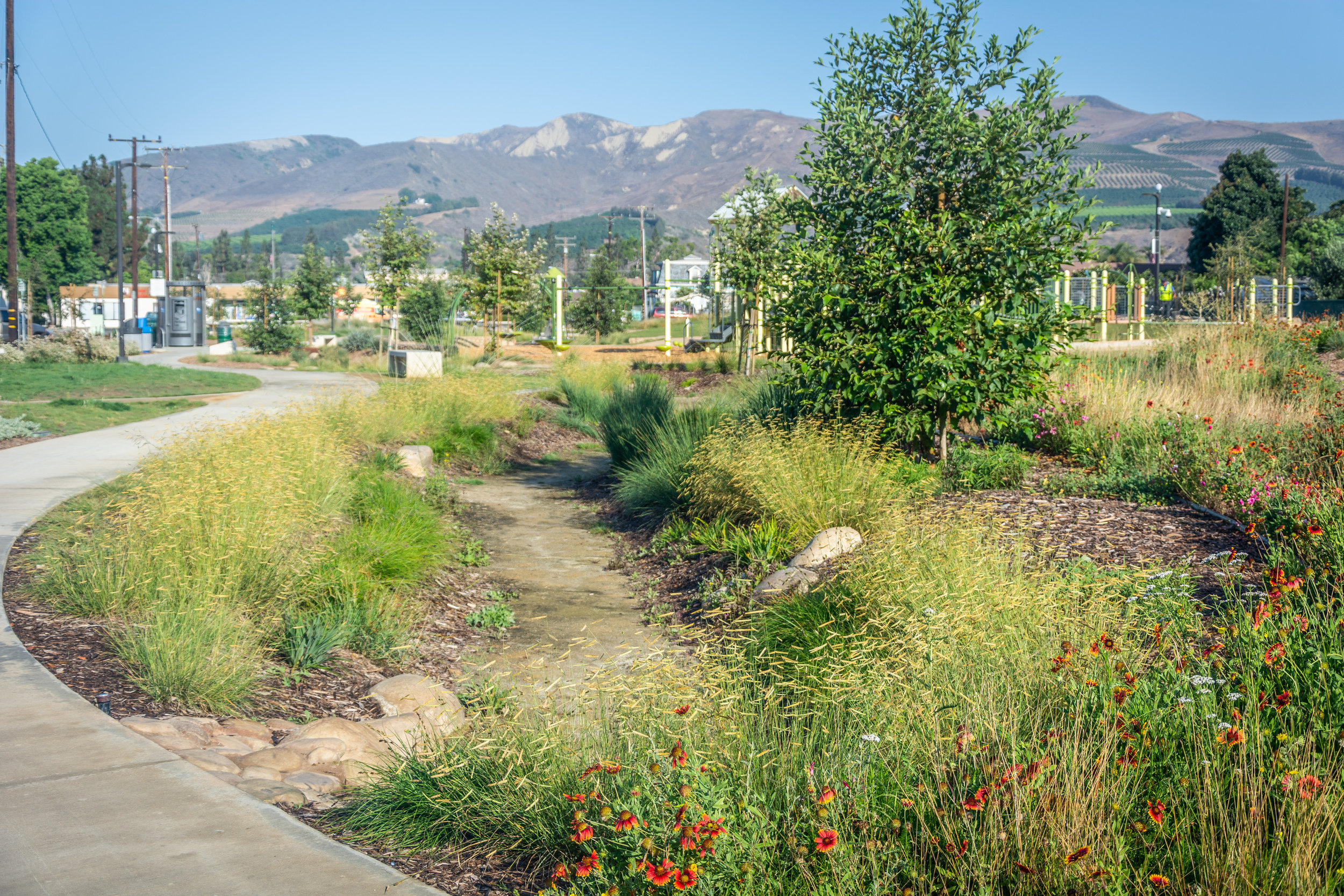
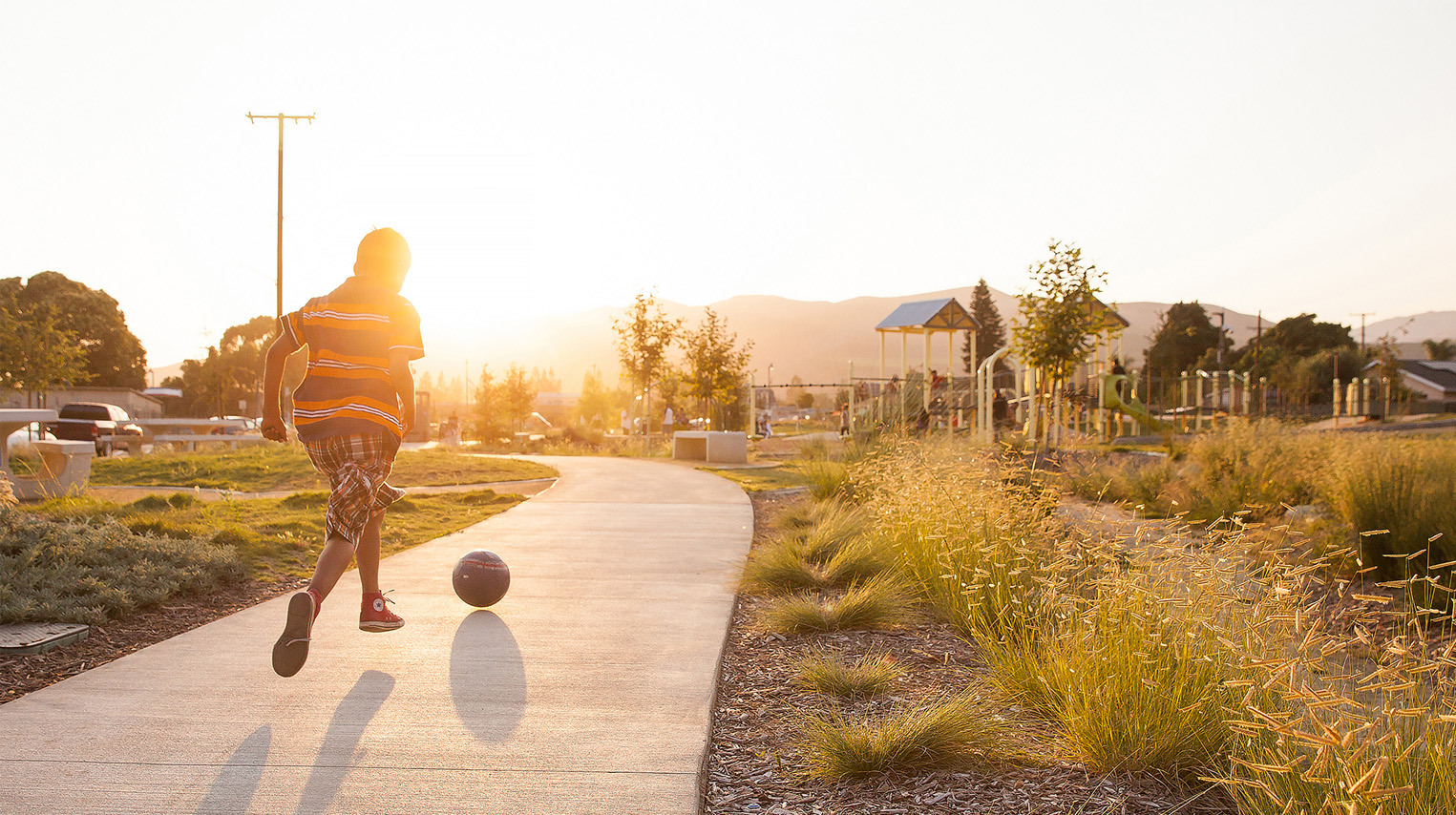
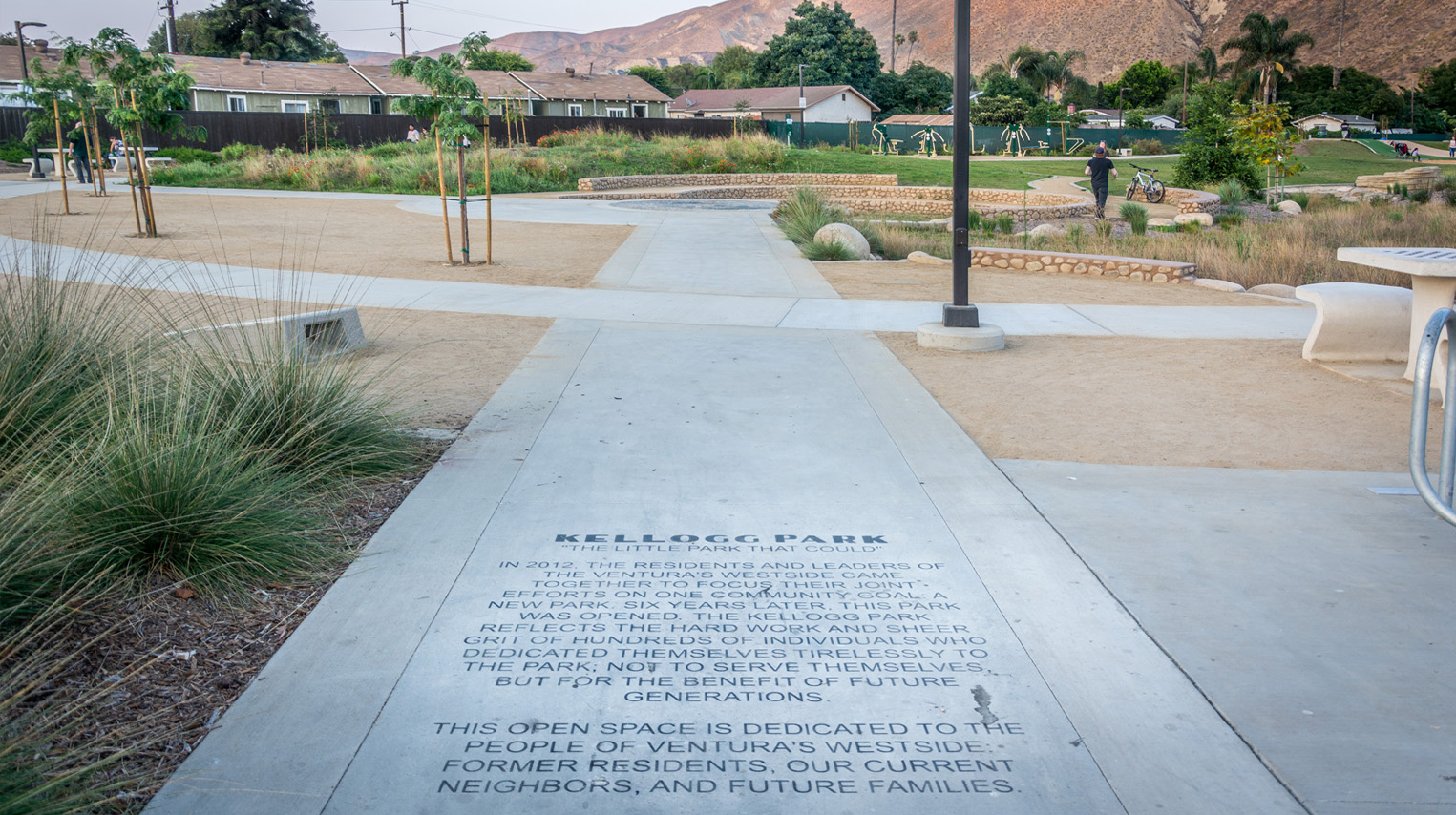
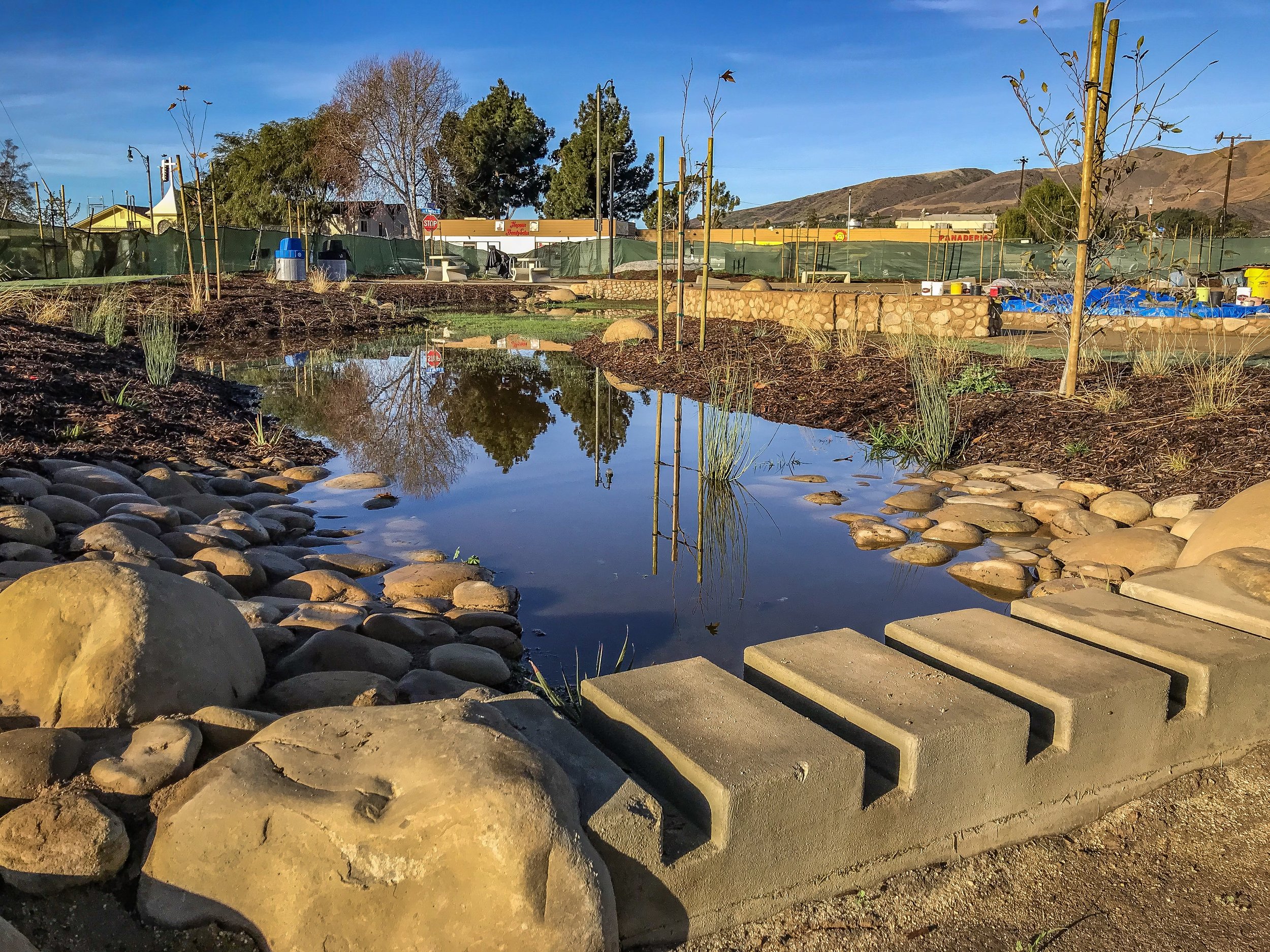
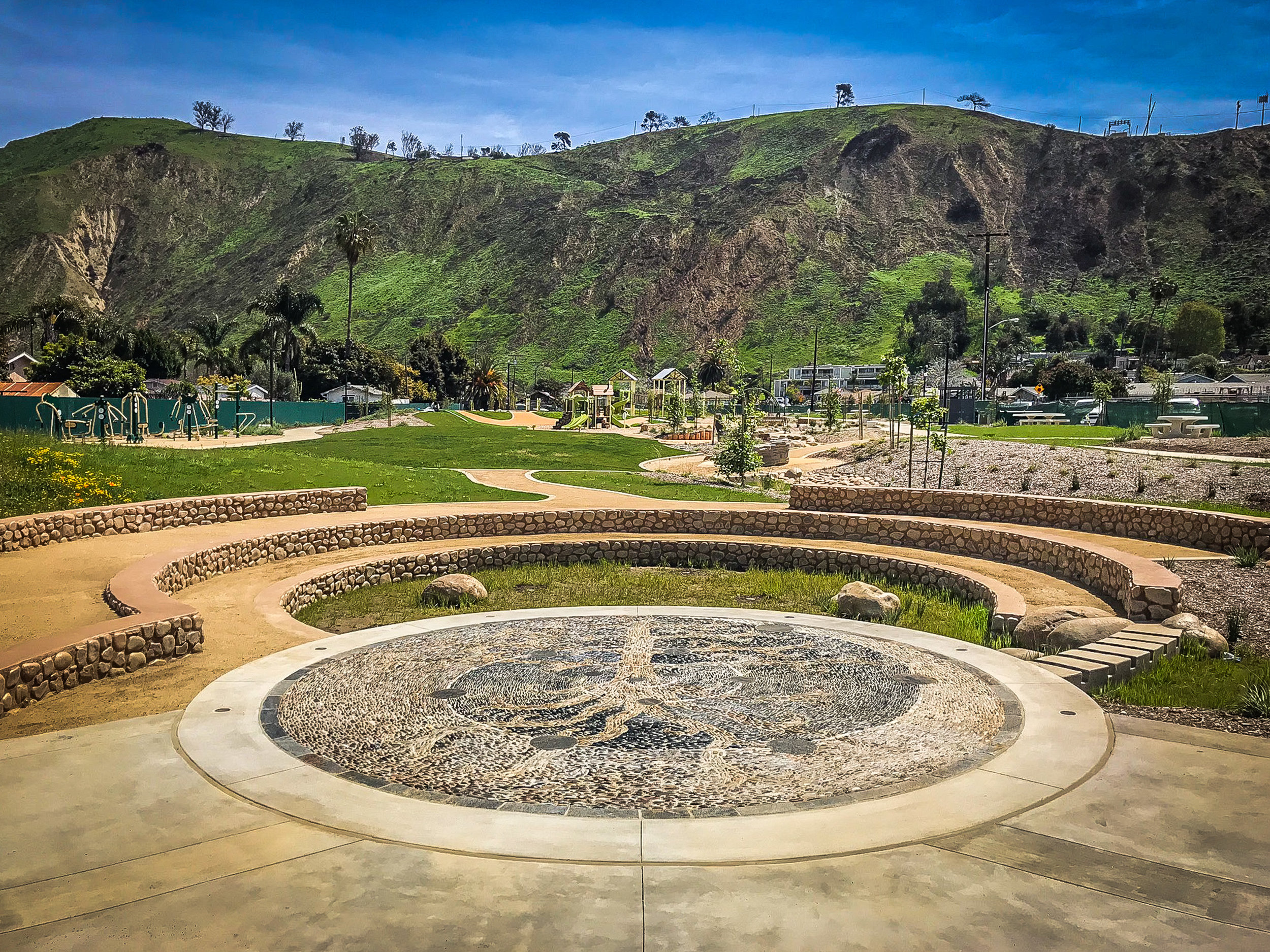
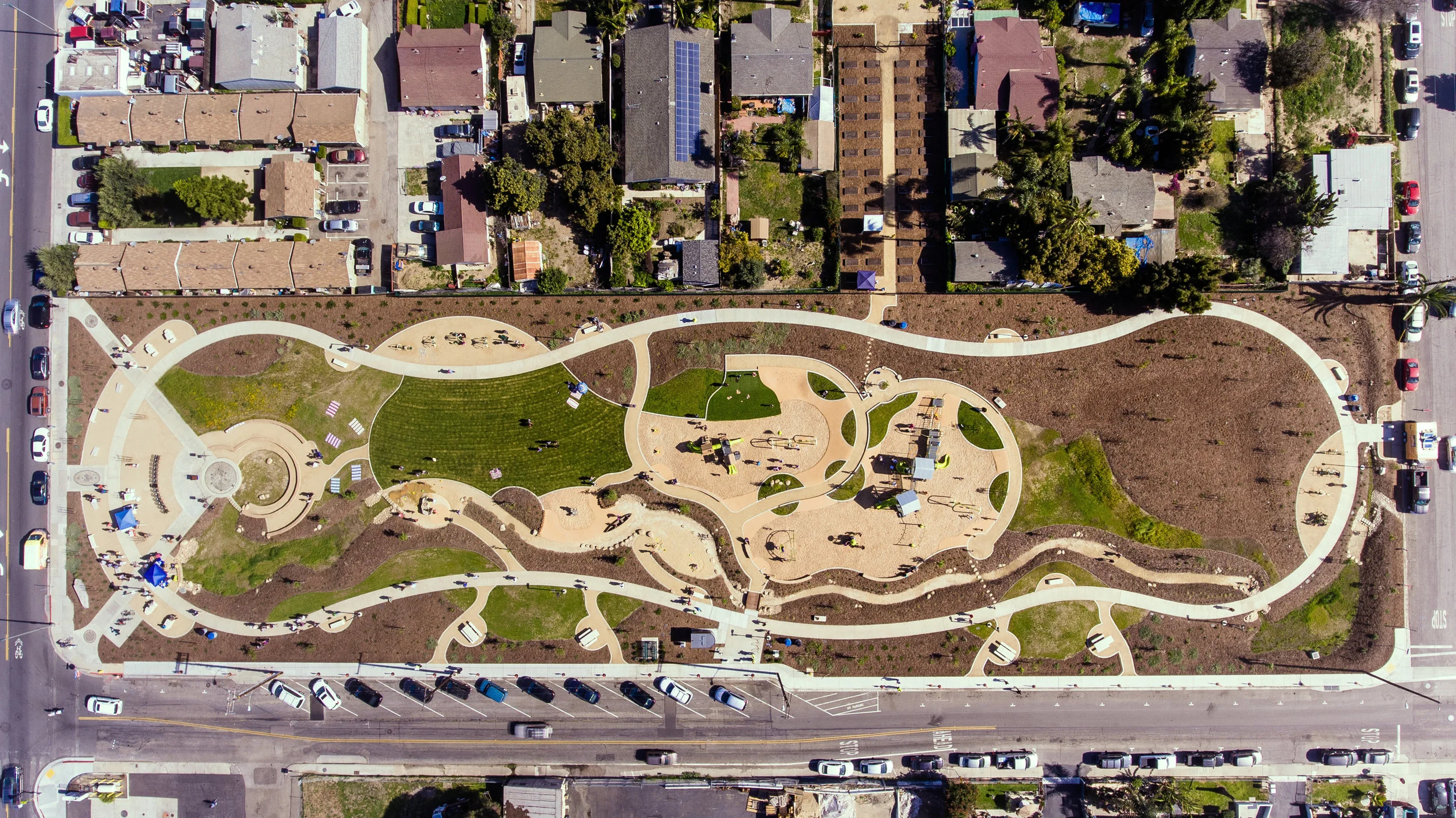

Kellogg Park
Kellogg Park is a 2.4-acre infill public park nestled into the Ventura’s ‘Westside’ neighborhood, a short distance from the Ventura River and the ocean. The conversation to convert the vacant site (formerly a rebar factory) began in 2012 as community members engaged the City as pushed to provide a new type of park in a neighborhood underserved by open space. The community and City engaged the Trust for Public Land to help purchase and develop the property. Following the initial community outreach process, Pacific Coast Land Design officially entered the project was chosen to further develop the design of the park from the initial concepts through construction documents, present ideas to the community, and ultimately see the park through construction. As a designer and primary project manager on the project, I facilitated the entire 3+ year process for PCLD, including community outreach, design development, construction documentation and construction administration.
In April of 2018, residents joined to celebrate the park’s grand opening as one of the most highly anticipated new facilities in Ventura’s recent history. Kellogg Park was recently awarded the Honor Award for Parks and Recreation Design by the Southern California Chapter of the American Society of Landscape Architects, the highest award given in the category.
The forms within the park are derived from the nearby geologic and hydrologic formations with the intent of providing children and adults an educational backdrop for the ecology of the region. The basic structure of the park includes a ¼-mile looped walking trail, a “natural river” stormwater swale, and a playground. Features of the park include a multi-generational community gathering area with beanbag toss games, game tables, and a small “stormwater amphitheater”. Concentric rings of local stone seat walls provide the form and function of this community activity space that doubles as the terminus of the park’s stormwater infrastructure. The stage offers the best overlook of the entire park, adorned by a large pebble mosaic “tree of life”, the largest of seven pebble mosaic installations throughout the park installed by a local artist.
From the vantage point of the amphitheater stage, the natural contouring of the park spaces becomes evident. Starting from a previously flat site, the soil cut to form the drainage features of the park, was used to fill and naturally contour in a balanced approach that eliminated soil import/export. This topography is utilized in numerous features, including the ridgeline that divides the 2-5- and 5-12-year-old playground areas while creating climbing elements, an artificial-turf slide hill, and providing access to several playground structures.
The natural character of the park is expressed in the primary sustainability feature; a sand-filter swale “river” that reflects the nearby Ventura River watershed. Designed primarily to detain and infiltrate the on-site runoff from large storm events, the system goes farther by collecting runoff from a neighboring street to alleviate local flooding and mitigate runoff water quality. In addition to the stormwater benefits of the swale, which occur during California’s seasonally rare rains, the swale also serves as a use amenity with “eddies” scattered along its course, each providing educational and recreational opportunities. These “eddies” include a sand play area with diggers and buried fossils to uncover, a streamside log climb, a canoe play feature, and a small water play facility. A wooden bridge provides access to the playgrounds at the center of the park, while boulder steppers and notched weir walls provide dynamic, explorative crossing opportunities at several locations. Besides the swale, native plantings, minimal turf, and water-efficient irrigation minimize the water demand in the park.


